










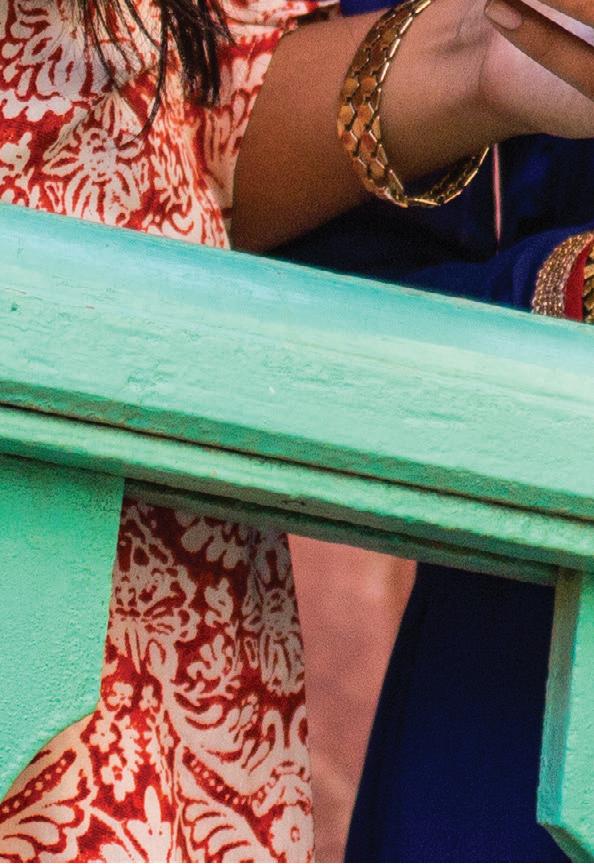



















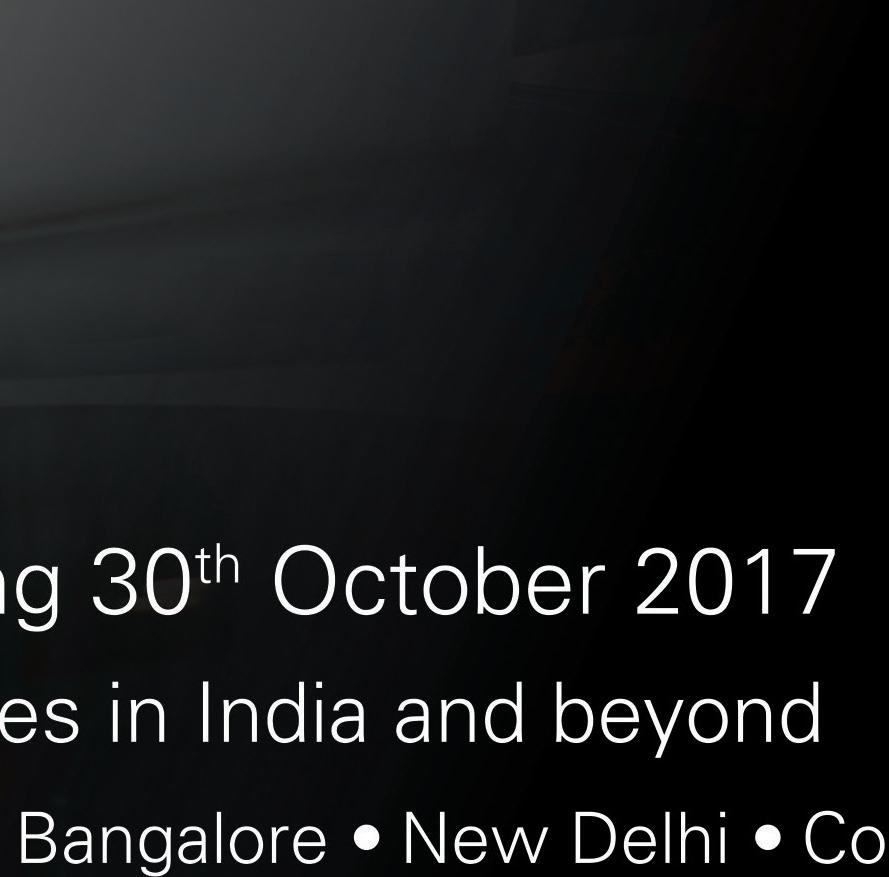














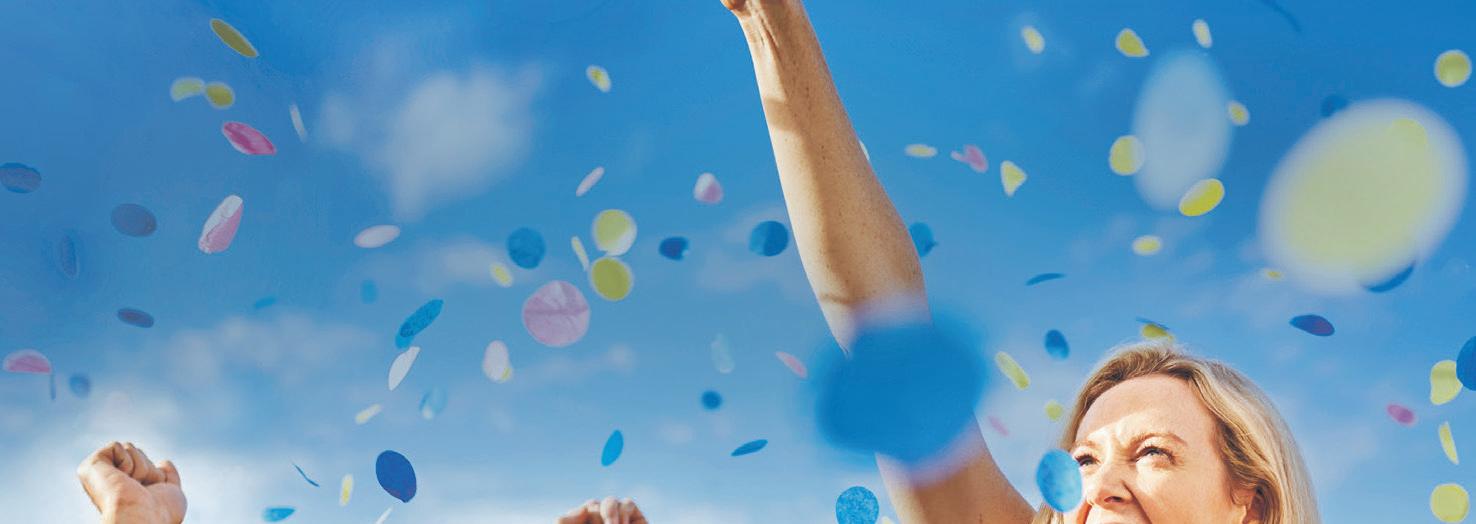




Krishna




















































Krishna

It’s been an interesting month.
On one side of the world, the US President who continues to plumb to new depths as he battles on with everyone - international foes, media, domestic leaders, and people on the street. Donald Trump’s speech at the UN made headlines when he threatened to “totally destroy” North Korea, declaring that the “Rocket Man,” a.k.a. North Korean leader Kim Jong-un, was “on a suicide mission.” Trump raged at “loser terrorists” and the “murderous regime” in Iran, and startlingly suggested that parts of the world “are going to hell.”
At home, he has raged against NFL players who are using their moment in the spotlight to call out police atrocities against African-Americans, and reduced a pregnant and grieving war widow to tears with his insensitive remarks about her departed husband.
As two natural disasters hit the US - Hurricane Harvey in Texas and Hurricane Maria in Puerto Rico - Trump
belittled Puerto Rico mayor Carmen Yulin Cruz who sought more help, and then went on to unfairly compare Hurricane Maria to Hurricane Katrina based on how many people had died, implying what was happening in Puerto Rico wasn’t a “real catastrophe.” And all this while there is an ongoing special inquiry into the Trump team’s colluding with overseas sources to win the last elections.
On the other side of the globe, China’s President Xi Jinping retained his position for another five years. At last year’s meeting of the Communist Party of China, President Xi was accorded the title of “core” leader, and at this year’s pivotal National Congress, a twice-adecade meeting, the 2,000 delegates voted unanimously to make “Xi Jinping Thought on Socialism with Chinese Characteristics for a New Era” a guiding principle for the party. This makes Xi considered on par with stalwarts Chairman Mao (who founded the People’s Republic in 1949), and Deng Xiaoping (whose legacy in reviving the economy was labelled “Deng Xiaoping Theory”).
Labelling this as the third chapter of modern China, Xi has articulated a promise of “harmonious living between man and nature” - a call for better environmental control (as the US goes the other way to open oil drilling
in previously protected areas); set out a 30-year time frame for the country to become a “global leader” with international influence; including leading in “innovation” by 2035, with big data and artificial intelligence integrated in the “real economy.” However, there were no mentions of the issues such human rights and censorship which are widely condemned by leading world commentators.
And then in India, PM Modi seems to be fighting to successfully execute his new GST policy, which is threatening to weaken his party’s hold on power. Elected on the promise of weeding out corruption, no substantial progress has been made in this regard in the last three years; unemployment in the country is rising and seems to have worsened after demonetisation; there seems to be low private investment activity on the ground, and very few land and labour reforms have been progressed. The Modi government seems to be blind to these issues at best, or has given up on them, at worst. The government, which won the last general election with a record mandate, needs to deliver for India, both internally and externally. Of the two Presidents and one Prime minister, only one seems to have a vision. Shame that the other two with strong people’s democracies are missing out.




































































PAWAN LUTHRA reported on a recent AIBC event at which the Indian High Commissioner Dr AM Gondane raised an important question: why is trade between Australia and India slipping?

Krish Na commented: True. With no language barrier and similar legal structure, India and Australia should have been much closer. There’s more to India than Adani and de nitely more than photo-ops with politicians
PAWAN LUTHRA was a judge for the Blacktown City Council’s Light Up Your Homes for Diwali competition organised in conjunction with Indian Link Arun Sharma wrote: Although it is lovely Diwali lighting and the winner must be congratulated, this is not the rst instance in Australia as claimed. The organisation Celebrate India in Melbourne has held the Home and Of ce illumination competition from 2007 to 2012. That was the rst ever!
ANEETA MENON wrote on Indian-Australian musician and actor Nicholas Brown in the most iconic kids’ show on television, Play School.

Nick Brown wrote: Many thanks to the Indian Link newspaper and to Aneeta Menon for such a great article
Gaurav Paswala wrote: Just read the article written on Nick Brown. First Indian-Aussie presenter on ABC. It’s a wonderfully written piece and I loved it. Just wanted to pass on my compliments to the team to cover the story and to Anita Menon as well.
Rohan Mirchandaney @metaRohan tweeted: Holy moly! What an inspiration, keep killing it bro!
Our pick of the best moments from the Diwali evening hosted by NSW Premier Gladys Berejiklian: guests, speeches and the spectacular sight of the Opera House lit up for Diwali.
Rajni Luthra commented: Great way to start Diwali celebrations! Wonderful to see community members being recognized in this manner. Congrats all! But only one woman??
Sandip Hor wrote: Great capture of many enjoyable moments
On Diwali, MITTU GOPALAN shared with us her story of her favourite diya. Sudha Kumar wrote: Ushering in the light. Beautifully worded, beautifully presented.
Sarojini Pillay wrote: Gorgeous family with beautiful smiles who light up lots of lives

Mittu Gopalan wrote: Thanks for the opportunity!!

Maya Vinu wrote: Let the festival of lights bring prosperity and happiness to you all, stay blessed always.
Leone Ziade commented: A wonderful tradition
Julian Leeser, MP for Berowra, addressed the audience in chaste Hindi at the Parramatta Diwali fair.
Meenakshi @manju_gsr tweeted: That was some impeccable Hindi, @ JulianLeeser
This particular edition of our regular social media quiz came up with many correct answers.
Vipul Chaudhary guessed: Pangong lake
Meenakshi Seetharaman wrote: Pangong Tso.
AVI CHANDIOK reviewed OzAsia Festival Adelaide’s Until the Lions Have Their Say by Akram Khan, a powerful retelling of a story from the Mahabharatha, presented as Kathak and contemporary dance.

Rajni Luthra commented: So topical, when so many women are becoming empowered to say #MeToo. Many modern-day Ambas are having their say, Akram Khan, OzAsia Festival.
> LOG on to your own Facebook or Twitter account
> TYPE “Indian Link” into the search box at the top of the screen and click on the link that comes up




> CLICK ‘Like’ to join the Indian Link Facebook community or ‘Follow’ @Indian_Link on Twitter


Think you have what it takes to call a match like Harsha Bhogle or Bill Lawry?

It’s time to put your skills to the test with Indian Link’s Who wants to be a Hindi cricket commentator? competition
Indian Link Media Group will be broadcasting live cricket commentary selected matches for the upcoming KFC BBL, KFC WBBL & ODI, AdelaideAustralia vs England
We are looking for commentators who:
> Have an in-depth knowledge of cricket

> Have fluency in commentating in Hindi
> Are able to travel to Sydney, Adelaide and Melbourne on match days
> Are over 18 years of age
Entries close 25 November 2017. T&Cs available at indianlink.com.au
1. Go to www.indianlink.com.au and watch the 3-minute video clip on our YouTube channel Indian Link Australia, or Indian Link Australia Facebook page
2. Record yourself calling the match in Hindi. (Use your smartphone or any other device)
3. Send us your recording via Whatsapp (+61 410 578 146) or via a message on our Facebook page (facebook.com/IndianLinkAustralia). Please include your name, age, city, contact details and email id. Successful candidates will be invited for a live audition.

There were close to 40 entrants in the competition’s very first year, a very healthy number.
BY HARSHAD PANDHARIPANDEBlacktown resident Ajinesh Singh has every reason for an extended Diwali celebration - and perhaps another helping of some homemade sweets - after being declared winner of the Blacktown Diwali Lights Competition. It was the only competition of its kind this year in Australia.
For Singh, it was like celebrating the festival of lights with the entire community.
He said he was really excited when he heard about the competition. “This is our festival and we should promote it in the society we live. The more we do it, the more it helps our culture and also strengthens multiculturalism,” he said.
While many residents have been decorating their homes for Diwali over the years, the enthusiasm went up several notches after Blacktown City Council announced the competition. The Council claimed it was the first competition of its kind in Australia this year. It was held in association with Indian Link Media Group.
“For many years Council has held a successful Christmas lights competition. Diwali is one of the biggest festivals celebrated in our city, which is home to about 28,000 people of Indian descent,” Mayor Stephen Bali had said while announcing the competition.

Indian Link CEO Pawan Luthra was one of the judges for the final evaluation of the seven shortlisted entries. “Judging was done on various criteria such as whether the decoration had a Diwali feel, how the entire area of the property was utilised for the decoration, how innovative it was and how eco-friendly it was,” he said.
On 23 October, the council announced the results and Ajinesh Singh was declared the overall city winner - and got the $500

prize - while Vishal Sadhu and his wife, Dr Shamila, came in at second place. Salina Saluja from Doonside, Sunaina Upadhyay from The Ponds and Jitendra Singh from Kings Langley rounded out the top five.
For Singh, who is originally from Fiji, doing up his home for Diwali is a cherished tradition. “I came to Australia in 2005 and moved to this house in 2006. My wife Shynia, daughter Tanya and I have been doing Diwali decoration at this house for 11 years,” he said, adding that they choose a different design each year.
Singh, an accountant, said he is all for preserving Indian culture for posterity. So, decorating home with - and forhis 15-year-old daughter was an added motivation for him.
The Singhs chose the theme of ‘peace’ this year. “We made an Aum and also a swastik symbol whose four arms and dots represent four virtues: Daan (charity), Shil (virtues), Tapa (austerity), and Samveg (nobility),” Singh said.
The whole decoration took two days, with all the family members, plus a couple of friends, chipping in. A perfect bonding
heartening to see was that the competition also brought diverse communities together. There was one participant in Parklea who had decorated her house for Diwali, and her non-Indian neighbour knocked on her door and greeted her,” Singh told Indian Link. “It’s great that Diwali is going mainstream in Australia.”
Blacktown Council also lit up its Civic Centre from 17 October to 21 October for Diwali. “There was a laser lighting show for Diwali as well,” Singh said.

Mayor Bali also said it was ‘fitting’ that Blacktown held the competition. “Blacktown is one of the most culturally diverse cities in Australia, being home to people born in 186 countries and speaking 182 languages. It

is therefore only fitting that we should host Australia’s first ‘Diwali: light up your homes’ competition, fusing an Australian and Indian tradition into a mutual celebration of light and life,” he said.
“Seeing as we are the only Diwali light up your homes competition in NSW, we can truly call the winner the inaugural national champion et another first for Blacktown’s thriving and vibrant Indian community. I thank everyone who took part and look forward to a bigger and brighter event next year,” he added.

We hope other councils are listening as well!
Check out Indian Link’s Facebook page for video and more pictures
activity before the festival!
It was a joint project for the Sadhus as well, and Shamila said it took them about a week-and-a-half to do up all the decoration. “We decided rangoli would be a great theme as it is a fixture during any festival. Therefore, we did all the common motifs such as diya, Aum, Lord Ganesha and the Kalash using lights,” Shamila shared, adding that all these symbols were used to welcome Goddess Lakshmi.
The couple painstakingly stuck the series of lights in the desired shapes on pieces of wood and then displayed them on the outside of their homes. Finding the right lights was also a challenge but in the end, the hard work paid off.
For Vishal, the excellent result in the competition brought back fond memories from Fiji, where he had also won a similar Diwali lights competition in 1995. He continued the tradition even after arriving in Australia in 2003.
Shamila said that around Diwali there was a great atmosphere in Bungarribee, thanks
to many people of Indian descent who live there. There was a lot of festive buzz in the community. “It felt just like home,” Shamila said.
Singh, the overall winner, echoed the thoughts. “The day of Diwali was a big celebration. We had 50-60 guests over to share our joy,” he said, adding that his wife Shynia made sweets from scratch.
The organisers couldn’t have been happier with the participation. Blacktown City’s Ward 1 Councillor Moninder Singh said the response was ‘tremendous.’ “Diwali’s aura in India is the same as it is for Christmas in Australia. India has a rich culture and this competition was the perfect showcase for it,” Singh said.
He added, “The spark of the idea obviously came from the Christmas lights competition and I am glad that Mayor Bali and everyone else in the council fully supported the competition.”
With almost 8% of Blacktown’s population having Indian descent, it was unsurprising that the competition got such a good response. “However, what was
This is our festival and we should promote it in the society we live. The more we do it, the more it helps our culture
Ajinesh Singh, winner
Blacktown City Mayor Stephen BaliPhotos: Adam Hollingworth 2nd place: Vishal and Dr Shamila Sadhu’s decorated home






To know the signi cance of lamps or diyas, one must rst know the meaning of the word Diwali, which is actually the commonly used name of the festival of lights. The word Diwali comes from the word Deepavali which can be split into Deep (meaning light) and Avali (meaning row).
The story goes that when Lord Rama and his brother Laxmana returned to their hometown Ayodhya after vanquishing the demon king Ravana, the residents of Ayodhya lined the streets with earthen lamps to light the way for the victorious brothers.
The lamp is also a symbol of wisdom and the ame represents the cleansing of the soul from evils.
Interestingly, an oil lamp is lit every day in many Hindu homes every morning and evening as a symbol of submission of one’s self to god.














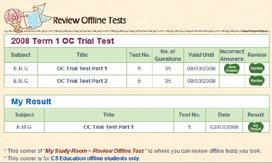















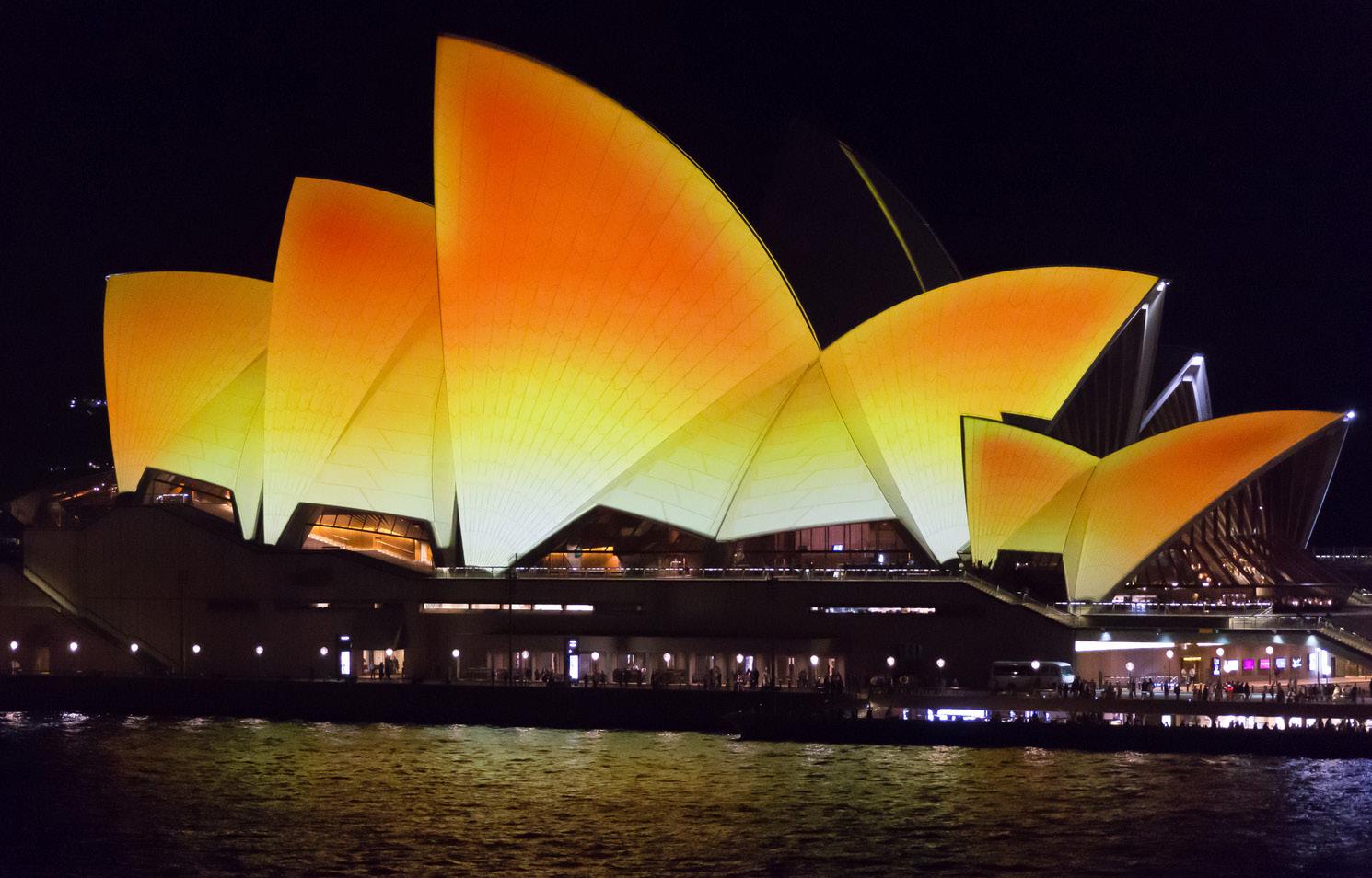 BY HARSHAD PANDHARIPANDE
BY HARSHAD PANDHARIPANDE

ive, four, three, two, one. The crowd chanted, its expectation rising with each number. Then, as NSW Premier Gladys Berejiklian threw on the switch, the sails of the Sydney Opera House came alive in a rich shade of golden with just a blush of red.
Was it a coincidence that the sails resembled the mango motif that appears
so commonly in the Hindu celebrations? Perhaps, but it seemed only fitting that one of the most recognisable landmarks in the world was lit up for perhaps the most recognisable Indian festival, Diwali.
It was an acknowledgement, as Berejiklian and all other speakers pointed out, of the stellar contribution of Indians to the growth of NSW and Australia.

The select gathering of invitees at the rooftop of the Museum of Contemporary Art, dressed in its most fetching festive finery, had the best vantage point for the lighting up of the sails, which was but the most obvious of many high points of the Diwali evening hosted by the NSW Premier and Multicultural NSW. Prominent members of the Indian-Australian
community added that extra sheen to the small but glittering evening.

Apart from the Premier herself, Minister for Multiculturalism Ray Williams, Seven Hills MP Mark Taylor, Sydney FC chairman Scott Barlow, Dr GK Harinath, Chair of Multicultural NSW Advisory Board, Parramatta MP Dr Geoff Lee, Strathfield MLA Jodi McKay, Granville MLA Julia Finn and CEO of AFL NSW, Sam Graham, graced the event. Consul General of India in Sydney, B Vanlalvawna, represented the Indian government.
Williams struck a chord with the gathering when he said that the reason Diwali resonated with everyone was due to its message of the victory of good over evil. “That is a message for all of
humanity,” Williams said.
Berejiklian also praised the message of Diwali - “It is all about awakening, revitalisation and (victory of) good over evil” - and the contribution of Indians who shared similar values of strong family bonds and importance of education with Australians.

While she mentioned it in passing, the lighting of the Opera House sails was perhaps especially significant for the Premier: her father was a migrant and he worked as a welder on the second-highest sail of the Opera House when it was being built. So, for her to light up those very sails in the honour of another migrant community would have felt fitting.
No doubt feeling proud about the warm
words about Indians, Consul General B Vanlalvawna reciprocated in equal measure, saying that the gesture of lighting up the Opera House was a symbol of the multiculturalism and inclusiveness of Australia.




Dr GK Harinath extended the sense of gratitude when he made the pertinent observation that for most IndianAustralians, the janmabhoomi (land of birth) was India while the karmabhoomi (land of livelihood) was Australia. “What an honour to be standing on the shores of our karmabhoomi to celebrate the festival of our janmabhoomi,” Harinath said, to warm applause. He also praised the BAPS Swaminarayan Temple for setting up the beautiful - and divinely delicious - Annakut
display in quick time.
The evening also honoured six Indian-Australians for the service to the community and society. These included Dr Prabha Chandra to reduce the incidence of diabetes in the Blacktown area; Sai Paravastu for feeding the homeless in the Parramatta area; Dnyanam Muthkrishnan for volunteering every Wednesday at the Royal Rahabilitation Hospital in Gladesville for the past 25 years and for starting the first Tamil school in Australia; Dr Prabhat Sinha, for holding Hindi language classes and advocating the inclusion of Hindi in the HSC curriculum; Dr Rakesh Sachdeva for establishing a forum for senior citizens and establishing a new dementia day care; and Mandar Tamhankar for starting a driving

school and
mentoring young drivers to drive safely.
“My dad will be in touch shortly,” emcee Khushaal Vyas self-mockingly joked, in what was one of the many comic moments he provided as he hosted the event with natural élan.
While the contribution of the honour recipients is undoubtedly applause-worthy, one was left wondering if there could perhaps have been greater representation for women, and indeed, youngsters.
But these thoughts were pushed to the background, at least for the moment, as the priest Jatin Kumar Bhat honoured the dignitaries amid Vedic chants. Then, the Premier took the stage one final time for the highlight of the evening.

As everyone counted down from five to one and greeted each other ‘Happy Diwali,’ Berejiklian flicked the switch to turn the Opera House into a glimmering spectacle, evoking audible ‘awww’s from all those present.
As everyone took in the glorious sight, and took mandatory selfies and pictures with the golden sails in the background, the mind went back to what Berejiklian had said earlier during her address. “Thank you for being here to celebrate the festival of lights in the most symbolic way in New South Wales, and that is by lighting up the Opera House sails,” she had said. “It doesn’t get better than that!”
Check out Indian Link’s Facebook page for video and more pictures





















 BY HARSHAD PANDHARIPANDE
BY HARSHAD PANDHARIPANDE

Abit of Ladakh came to Sydney last week. This was the Ladakh of expansive mountains; and of intimate, everyday moments of its hardy people. This was the Ladakh of the Buddha; and of the snow leopard. This was Ladakh as most people haven’t seen: through the eyes of 23 students who live there.
These children, who study at the famous Druk Padma Karpo School (Druk White Lotus School), made drawings and paintings depicting their own private version of Ladakh. The works were displayed at the Union Bank of India’s Sydney office in an art exhibition aptly titled The Indian Himalayas: Through My Eyes on 17 October. The exhibition was an initiative of Aei4eia, a company focusing on sustainability matters and was supported by India Tourism, Sydney.
The exhibition was a part of ‘People, Economy, Art, Culture & Environment (PEACE) of the Indian Himalayan Region,’ an effort by Aei4eia to conserve this global heritage.
While the artists themselves were not present at the exhibition, their paintings were proudly displayed in the Union Bank office.
The first prize went to 16-year-old Stanzin Odzar’s highly detailed black-andwhite work showing a composite of several aspects of the mountainous region - the Dalai Lama, the snow leopard, the ibex, the harsh sun, snow-capped mountains, stupas, prayer flags, mask dance monks, shepherds, soldiers, road workers, farmers and more.
Jigmat Phunchik’s painting - which won the second prize - depicted a lens through which could be seen various elements such as a monastery, a traditional Ladakhi home, migratory birds and people in traditional attire. The work also incorporated motifs from Buddhist art.
Padma Dorjey’s third-prize winning effort showed a pristine lake, a rising - or setting – sun, mountains and monasteries. Tsering Dolkar’s simple drawing got a special mention for her depiction of a river,

snow-capped mountains, farming and daily activity.
Most drawings also incorporated the image of His Holiness The Gyalwang Drukpa, founder of the school.

A brief presentation, conducted by Aei4eia director Jayantee Mukherjee Saha, preceded the judging of the art work.
Saha also screened a short documentary about the Druk Padma Karpo School, which shot into limelight after being featured generously in the Bollywood hit 3 Idiots.
Located at Shey near Leh in the Ladakh region, the school is one of the remotest schools in the world yet one of the most scientifically advanced. “Interestingly, it has been designed by the same firm that brought the design of Sydney Opera House to life,” Saha said.
The documentary went on to say how the school balances modern teaching with ancient traditions and how the school building and the design firm have won numerous international awards for sustainability and architecture.

There are more than 380 first-generation learners of the nomadic tribe called Changpas in the school. “We are not wildly and wantonly competitive,” the
1st prize: Stanzin Odzar
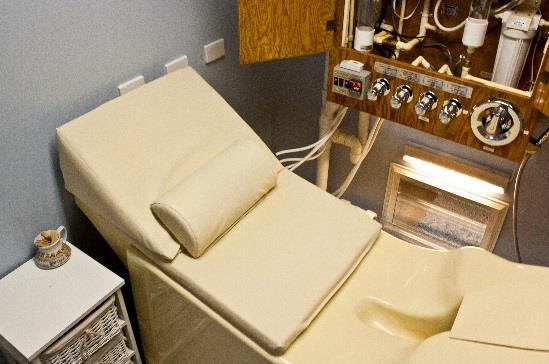
2nd prize: Jigmat Phunchik
3rd prize: Padma Dorjey
Special mention: Tsering Dolkar
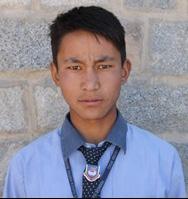



school principal Stanzin Kunzang says in the documentary. “We want our children to be compassionate human beings. We want our children to competitive, smart and outgoing, but not at the cost of being robots or heartless people.”
Philip Ruddock, former Minister for Immigration and Multicultural Affairs, Former Attorney General of Australia, Mayor of Hornsby Shire Council and the second longest-serving parliamentarian, was the chief guest at the event. He came away impressed by the school and the students’ art work. “The students have shown us their world through their eyes,” he said.
Consul General of India in Sydney, B Vanlalvawna said he felt a special connection with the art as it involved Himalayas which also extended to his home state Mizoram. “The fact that the art work is being displayed thousands of miles away in Sydney will no doubt be a huge encouragement for the kids,” he added. Union Bank of India’s Sydney branch CEO Pankaj Kumar also praised the efforts of Aei4eia as well as those of the students. Saha also announced that the bank was giving a donation to the school and had also sponsored prizes for the students.
It’s kitschy, it’s cool and it’s definitely colourful.
For commuters on the streets of Melbourne, it is hard to miss the bright vinyl wrapped tram that currently plies on route No 11 West Preston and No 86 Bundoora tramlines.
Tramjatra is first of the eight trams designed to bring colour and creativity to Melbourne’s daily commute and is eliciting mixed response for its visual imagery.
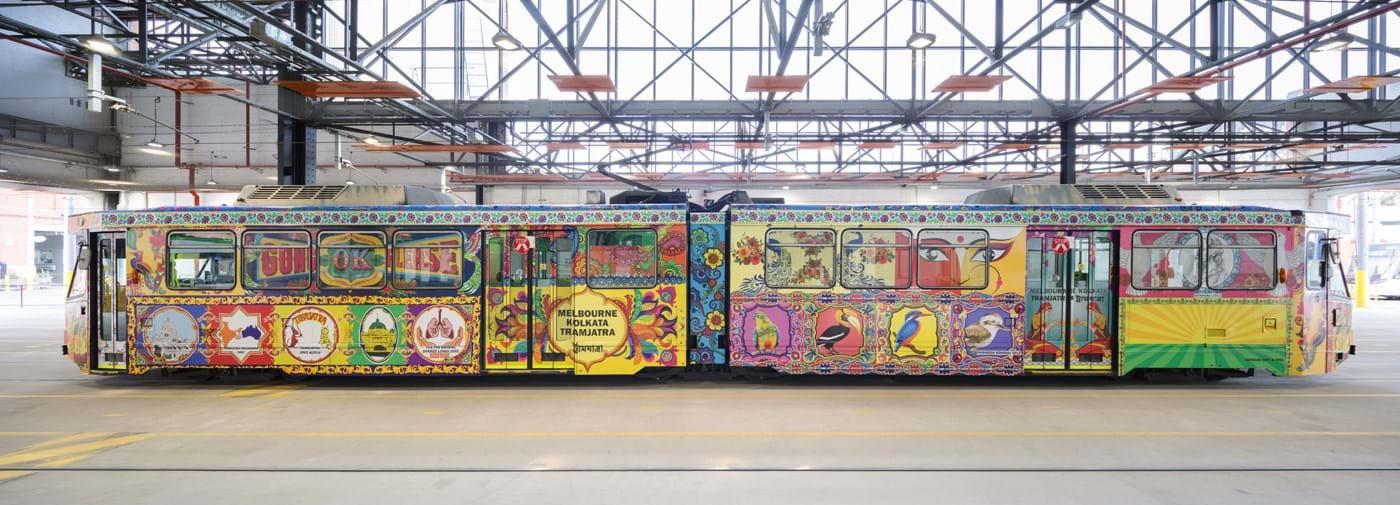
Using elements of popular Indian streets and tribal art, Lucknow-born IndianAustralian artist Bushra Hasan has designed Tramjatra to honour the 21-year-old tramways relationship between Kolkata and Melbourne.
Esoteric is the word that springs to mind as one absorbs the art that has been made inherently accessible and public, courtesy the Melbourne Art Trams project.
A Victorian Government initiative, the project is a collaboration between Creative Victoria, Public Transport Victoria and Melbourne Festival with Yarra Trams.
The annual Melbourne Art Trams project, now in its 5th year, invites Victorian artists and community groups to submit designs that transform trams into mobile artworks.
Apart from Bushra, this year the designs are by artists Robert Owen, Matthew Clarke, Emma Anna, Oliver Hutchison, Justine McAllister, Josh Muir and St Albans Heights Primary School’s Community Hub.
Speaking animatedly, Bushra shared the story of how her art made it to the largest ever canvas she has worked with.
“My art exists beyond the gallery, it is in everyday objects from a simple spoon to a storage can, buckets, tins and now to a tram,” said Bushra, who is also the cofounder of Indybindi designs.
Bushra created Indybindi, along with her two sisters Maryam and Zoya, to give visual expression to ordinary items and transform them into masterpieces.

Their promising business venture also supports Ashiana, an NGO for underprivileged women and children in Uttar Pradesh. Rural women are encouraged to learn to paint items, generate an income and be self-reliant.
A graphic designer by profession, Bushra has worked in India with fashion and lifestyle magazine Marie Claire as a senior designer and Harper’s Bazaar as an Assistant Art director.

She migrated to Australia in 2013 and after brief stints in Sydney and Launceston, settled for the world’s most liveable city.
During a visit to meet her sister, who was studying at RMIT, Bushra visited Melbourne and the city worked its charm on her. “The artist in me wanted to live in this beautiful city and I moved here with my husband in 2014,” she said, sharing her migrant journey.
She worked for St Kilda News as a graphic designer and is currently working on freelance projects with Multicultural Arts Victoria (MAV). She was also responsible for designing the two lifelike moving elephants at the Moomba Parade in 2015.
Tramjatra was initiated in partnership with Melbourne trammie Roberto D’Andrea. A friendship society was started in 1996 between Melbourne and Kolkata as the two cities outside of Europe that have used trams since 19th century. This year, they celebrated their 21st anniversary.
“I must admit that initially when Roberto explained the concept to me, I was unsure how to incorporate all the past Tramjatra characters and over 20 years of history in my design. It was such a good story with so much to say but I did not want the tram to look cluttered so I decided to use truck art,” said Bushra.
“Truck art is funky, kitschy and I can juxtapose it with artworks from different regions of India that are reflective of its diversity,” said the talented artist.
According to Bushra, she added her own
touches like the eyes of Goddess Durga that ward off all evil and are symbolic of the complexities of India’s contemporary society, particularly notions of gender.
She tried to reflect the warm Indian welcome and hospitality on the doors with images of flowers being showered on the passengers and the Indian Namaste.
Characters like Bondhu, Calbourne, Sundari, Cricket, Baccha, Shared-Lung, Paribeshbandhu and Gitanjali were incorporated in the design. Orange-bellied Parrots next to Great Indian Hornbills were also included.
All of this was designed on computer and then reproduced on vinyl. It took her a month to create the design and then put it
on sticker art. It took nearly two days and specialised workers to wrap the vinyl in perfect alignment around the tram.
“I want everyone who looks at the tram to smile. I want to communicate the vibrancy, colour and diversity of India whilst retaining the rich Tramjatra history,” said Bushra. “I also want the colours to cut into the grey tone of Melbourne,” she continued with a smile.
The other seven trams, with their own unique design concepts, will also be hitting Melbourne’s streets soon. All the trams will stay on tracks till April 2018.
Throughout the lively conversation on topics ranging from challenges faced by her to her grasp of traditional art and technology, her politically inclined family and her rebellious siblings, Bushra was delightfully candid.
She also shared with characteristic enthusiasm the ‘overall positive’ feedback she has received for her design so far.
With art being subjective and open to multiple interpretations, people have made several comments on Bushra’s artwork ranging from incredible to hideous. Whether you love it or hate it, you simply cannot ignore it.
I want everyone who looks at the tram to smile. I want to communicate the vibrancy, colour and diversity of India
Bushra Hasan, artistIndian-Australian artist turns Melb tram into a colourful canvas with a Kolkata connect
Pink Diwali
Sat 28 Oct (7.00pm onwards)
Saheli Club Sydney presents Diwali event at Hemani Mehmi Indian Restaurant 268 George St, Liverpool. Details email team@saheliclubsydney.com.au
Diwali party
Fri 27 Oct (6:30pm - 12.00 midnight) SendPyar organises a Bollywood theme Diwali party at Belhaven Manor Function Centre, 82 Station Street Wentworthville.
Details Sangita 0403 056 490 / 0401 279 386
Nepalese Deepavali
Sun 29 Oct (11.00am - 8.00pm) Rockdale Bicentennial Park, West Botany St, Rockdale

Deepavali at church
Sun 5 Nov (6.00pm-7.00pm) St
Mary’s Church, corner of Miller and Ridge Streets, North Sydney will celebrate the Festival of Light, India’s biggest festival. Ceremonies will include blowing of the conch shell, lighting of the ceremonial lamp, special Indian music, including Christian hymns and prayers in Indian languages such as Hindi and Gujarati and a Sanskrit mantra and devotional and festive Indian dances.
Details 02 8918 4101
Dementia forum
Fri 27 Oct (5.30pm - 7.30pm) The Consulate General of India and the Dementia Support Group for Indian Australians Inc in collaboration with the Federation of Indian Associations of NSW (FIAN) present a dementia forum at the Consulate, Level 2, 265 Castlereagh Street, Sydney.
Details Anju Kalra 0478 130 464
Seniors Forum
Sat 4 Nov (1.30pm - 4.00pm) AASHA Australia Foundation Ltd presents a panel discussion on ageing and seniors’ rights. Pennant Hills
Community Centre, cnr Yarrara Rd and Ramsey St, Pennant Hills. Details Bijinder Duggal 0412 786 569
The South Asia Study Group at the University of Sydney presents its film series ‘Films for Thought’, at the New Law Annexe Seminar Room 342. This film series includes a set of films over the course of Semester 2, 2017 focusing on gender issues in different countries across the South Asian region and the South Asian diaspora in Australia.
Thur 26 Oct (5:30 pm – 8.00 pm)
Gulabi Gang
Thur 16 Nov (5:30 pm – 8.00 pm)
Udita
Thur 30 Nov (5:30 pm – 8.00 pm)
A Thin Wall
Details Nishtha Sharma 0490 373 031
Kathak
Sat 28 Oct Swastik Institute of Dance presents Kathak exponent Pandit Rajendra Gangani in the show Kathak Darpan. Riverside Theatre in Parramatta. Details 0402 551 841
Poetry
Sat 28 Oct MKS Films presents an evening of poetry Kavi Durbar Mushaira, at C3 Conference Hall, 108 Silverwater Road Sydney. Details Shah 0420 212 969
Theatre Fest
Thur 9 and Fri 10 Nov Nautanki
Theatre presents its 2nd South Asian Festival at the Riverside Theatre in Parramatta. Details Sunny Singh 0449 616 227
Yugpurush
Fri 24 Nov, Sun 26 Nov and Tue 28 Nov Shrimad Rajchandra
Mission presents stage production Yugpurush, based on the spiritual life of Mahatma Gandhi. Sydney Baha’i Centre, 107 Derby Street, Silverwater. Details sydney@ shrimadrajchandramission.org
Rahul Deshpande: Classical
vocal
Sun 5 Nov (5:00pm - 11:00pm)
Haridayesh Arts Sydney presents classical vocalist Rahul Deshpande live in concert at Parramatta RSL Auditorium, Cnr of O’Connell St & Macquarie St, Parramatta Details Vasanti 0416 057 032
FUNDRAISER
ATSA’s Saaya
Sun 29 Oct (3.30pm - 6.30pm)
Australian Telangana State Association presents its annual Saaya program, an evening of Bollywood songs at The Performing Arts Centre, Pacific Hills Christian School, 9-15 Quarry Rd, Dural. The two worthy charities picked as the beneficiaries of the event this year are NAAM foundation which works for the welfare of the farmers in India and Sarvodaya Youth Organisation in Telangana which helps provide homes for orphans.
Details 0402 335 054
BAPS Walkathon
Sun 12 Nov (10.00am - 12.30pm)
Sydney BAPS Mandir will hold its annual fundraising walkathon at the Sydney international Regatta centre, Penrith Lakes. The two worthy charities picked as the beneficiaries of the event this year are Nepean Hospital and the Chappell Foundation. Meet at Gate A, Old Castlereagh Rd, Castlereagh.
Details Pradeepbhai Jobanputra 0420 779 988
LECTURE
Ambedkar lecture by Michael Kirby
Wed 8 Nov (12 noon - 2.00pm)
Western Sydney University presents the Hon Michael Kirby AC CMG, presenting a talk entitled ‘Law Reform, Constitutional Reform and the Inspiring Example of Dr BR Ambedkar’. Moot Court, Building EO, Parramatta Campus, WSU. Cnr James Ruse Drive & Victoria Road, Rydalmere. Details k.manning@ westernsydney.edu.au
National Unity Day
Tue 31 Oct (5.00pm - 6.00pm)
The Consulate General of India, Sydney cordially invites you for Rashtriya Ekta Diwas (National Unity Day) on the birth anniversary of Sardar Vallabhbhai Patel, at the Indian Cultural Centre, Level 2, 265 Castlereagh Street, Sydney. Details Vishwajit 02 9223 2702.
Chinmaya Mission
30 Oct – 4 Nov (7.30pm - 9.00pm) Swami Shrikarananda presents free public talks in English entitled Know the knower and the known, at Chinmaya Sannidhi 38 Carrington Rd, Castle Hill.
Details Mahal 0411 899 554.
Sri Andal Sydney

Fri 3 Nov to Sun 5 Nov Sri Andal Sydney presents spiritual discourses (upanyasam) in Tamil by Sri U Ve Aravindalochanan Swami. Venues Wentworthville, Wattlegrove, Baulkham Hills, Westmead.
Details Mohan 0412 472806
Bangladesh Festival Australia
2017
Sat 28 Oct (3.00pm - 10.00pm)
Live entertainment, mixed stalls. Paul Keating Park, The Mall, Bankstown. Details www.bdfestival.com.au
The Sydney Hills Curry Festival Sun 5 Nov (2:00pm - 9:00pm)
International curry stalls, Bollywood performances, musical performances, traditional clothing stalls, kids’ rides, face painting, jewellery stalls. Castle Hill Showgrounds, Showground Rd, Castle Hill. Details 1300 338 368.
To list your event email: media@indianlink.com.au
• Killara location
• Do you speak Hindi or Urdu?
• Support a client with a spinal cord injury
• Responsibilities include personal care, manual handling and respite support

• Experience with bowel care and hoisting would be ideal.
Please call Michelle on 1300 675 893 to apply
send Money Overseas most reliably and securely within 10 minutes through moneygram send Money to any bank account at the best rate and flat fee of $15 (No Limits applicable on amounts)




exchange your currency with us, we give the best rates and do not charge any commission send money to our own branches in all major towns and cities in Fiji and New Zealand


Ask us about our commercial business, we do import payments and all international business related remittance at best rate and a flat fee of $15.00 only


Almost a year down the line, is Prime Minister Narendra Modi’s dream of making India a cash-less or less-cash country becoming a reality?
Industry stakeholders feel that though the note-ban drive by the government gave the necessary impetus to citizens to start adopting online payment platforms, a lot needs to be done by both the government and the industry to make it a success.
The adoption rate of online platforms was high during the demonetisation period, but it plateaued out as soon as cash became available in the system.
When the Modi government banned high denomination notes of Rs 500 and Rs 1,000 notes on 8 November last year, removing an overwhelming amount of cash from the economy, people had to willy-nilly fall back on plastic or online transactions.
“The fact that 86 per cent of the cash available in the system was sucked out overnight gave an immediate boost to online/mobile payment platforms. There was a push-up factor,” Vishwas Patel, cochair, Payments Council of India (PCI) and founder and CEO of CC Avenues, told IANS.
But once cash was back in circulation, those who earlier dealt mostly in cash went back to doing so, he said.
The PCI was formed under the aegis of Internet and Mobile Association of India in 2013 to cater to the needs of the digital payment industry.
He said during November, December 2016 and January 2017, online transactions were at their peak. In October 2016, debit card transactions stood at Rs 21,941 crore and those of credit cards at Rs 29,942 crore. Post-demonetisation, in December 2016, debit card transactions jumped to Rs 58,000 crore and those of credit card were at Rs 31,150 crore.
However, in August 2017, 10 months after the note ban, debit and credit card transaction stood at Rs 36,000 crore each, having come down substantially from the
heights they achieved, but not falling back to the pre-demonetisation lows.
Patel said that after the cash flow in the system eased, small kirana shops stopped transacting through online payment channels, primarily because they did not want to take a tax number or a Goods and Services Tax number. “They do not have the wherewithal to pay taxes,” he said, adding that the “government needs to incentivise merchants, otherwise small and medium enterprises are going to go back to cash mode.”
Patel said security and trust in payment systems was something all stakeholders need to work on together. “As an industry body, we are preparing a National Negative Database of consumers and merchants so that we can reduce fraud and build trust in the eyes of consumers,” he added.
The database details would be circulated amongst payment gateway service providers, banks and card companies. “We are also working on a trust certificate that can be displayed by all merchants on their websites,” Patel added.
Vineet Singh, Chief Business Officer at Mobikwik, a payment app, said demonetisation had become a force multiplier. “It has pushed India a decade ahead towards the agenda of adopting online payment platforms. Naturally, things cooled down a bit post-demonetisation,” Singh told IANS.
Mobikwik had 3-3.5 crore users in the pre-demonetisation days and a year after note ban it has 6.5 crore. The company also witnessed a sharp rise in transactions from one million to three million within a year.
“Online payment companies in the last one year have increased their base significantly. They are experiencing healthy month-on-month growth and the adoption of online payment platforms was across all age groups,” Singh said, adding that “now everybody takes online payment seriously, which will provide a secular road towards a cash-less society.”
Vivek Belgavi, Leader, Fintech at PricewaterhouseCoopers, too said that, after cash returned to the system, people started transacting more in notes, but there
was an uptick in digital transactions.
“Digital transactions have grown. But the key thing is that a lot of stepping stones for future adoption have been laid down -- like the BHIM (Bharat Interface for Money) app by the government. Demonetisation was the shock that forced people to move to online channels,” he said.
Belgavi said the government should give more importance to low-cost infrastructure like availability of point-of-sales machines.
“Industry should offer citizens the whole ecosystem of digital transactions. They should be offered an experience that is better than cash transactions,” he added.
Dewang Neralla, MD and CEO, Atom Technologies, told IANS their online payment processing volumes had grown three times since demonetisation.
“By March 2017, our transactions had doubled and with almost 11 months gone by we still see a healthy growth of around 20 per cent on a month-on-month basis. Today we process payments of about Rs 6,800 crore per month across more than 100,000 merchants. We expect this figure to grow at least three times in the next three years.”
Online transactions are bound to grow over a period of time, but in a country which overwhelmingly ran on cash, it may be difficult to do a quick digitisation.
While the immediate impact of demonetisation was seen in the long queues outside ATMs and felt through acute cash shortage, its upcoming anniversary is an appropriate vantage point to assess the less visible and generalised effect on the economy of what was easily the most disruptive measure postIndependence.
The difficulty in making a cost-benefit analysis is that the move was not purely economic, given the fact that the currency issuer Reserve Bank of India (RBI) had no role in the decision, as testified by former Governor Raghuram Rajan.
So demonetisation comes across more as a measure of political economy with the declared objective of curbing black money and countering counterfeiting and terror finance, and which appeared to have paid political dividend to Prime Minister Narendra Modi in the Uttar Pradesh elections this year.
Starting with the official figures, at the end of May, the Central Statistics Office announced that GDP during the fourth quarter, ending March this year, fell sharply to 6.1 per cent from seven per cent in the previous quarter, while growth for the year as a whole was also expected to decline correspondingly. India’s GDP during the past fiscal grew at 7.1 per cent, at a rate lower than the 8 per cent achieved in 2015-16.
In terms of gross value added (GVA), which excludes taxes but includes subsidies, the growth came in even lower at 5.6 percent over the GVA for 2015-16.
Chief Statistician T.C.A. Anant sought to downplay the impact of the note ban, saying he “would caution against reading a single number that comes out after an event as being reflective of consequences of the event”. At the time of releasing the previous quarter’s GDP, he had said that this was based on figures on industrial production and only on the advance filings of corporates.
The numbers, therefore, had not factored in the informal economy, which accounts for an estimated 45-50 per cent of output in the Indian economy and employs around 85 per cent of the country’s workforce. More importantly, this sector transacts entirely in cash and was the hardest hit by demonetisation, which withdrew 86 per cent of currency from circulation.

Former Chief Statistician Pronab Sen had said in March that once the informal sector numbers came in, the growth rate could go below 6.5 per cent, which turned out to be close to the actual figure.
At the same time, both the RBI and the International Monetary Fund (IMF) lowered India’s growth estimates for 201617 by up to 1 percent, citing the impact of demonetisation.
Sotheby’s staff in London inspect a large silver tribal ritual mask of Nandi with origins in 18th century southern India, on 20 October. It went under the hammer on 25 October. Photo: AP

This was not too far from former Prime Minister Manmohan Singh’s prediction that the economy would be hit by around two per cent because of the note ban.
Rating agency ICRA said in a note earlier this year that “since the early estimates of quarterly GVA rely heavily on available data from the formal sector, which is expected to have weathered the note ban better than the informal sector, the third quarter (October-December) projected GVA growth of 6.6 per cent may not fully capture the impact of the note ban”.
In October, the IMF said in its latest World Economic Outlook that India’s economic growth for 2017 and 2018 will be slower than earlier projections. The report cited “lingering impact” of demonetisation and the goods and services tax (GST) for the expected slowdown during the current and the next year. The IMF projected India to grow at 6.7 per cent in 2017 and 7.4 per cent in 2018, which are 0.5 and 0.3 percentage points less than the projections earlier this year, respectively.
The World Bank too forecast that India’s GDP may slow from 8.6 per cent in 2015 to 7.0 per cent in 2017 because of disruptions by demonetisation and the GST.
Former RBI Governor Raghuram Rajan, who, on being asked by Modi for his informal opinion, had said the costs of such a measure would outweigh any longterm benefits, while there were less costly alternatives to achieve the stated goals of demonetisation.
“On the short-term costs of such a measure, monetary economists would say that you’d see an immediate impact on activity. People who used currency, things would shut down for them... there would be an unrecoverable effect on economic activity,” Rajan said here at the launch of his book “I Do What I Do”.
Citing the cost analysis by metrics of demonetisation done by JP Morgan, Rajan said the GDP took a hit of around 1.5 per cent, which translates to a sum of Rs 200,000 crore.
“On the benefit side you have Rs 10,000 crore coming in, but you need a lot more taxes than that to really benefit,” he said.
Coming back to the beginning, this is what Nobel winning economist Amartya Sen had to say of demonetisation: “It is a despotic action that has struck at the root of the economy based on trust. It undermines notes, it undermines bank accounts, it undermines the entire economy of trust. That is the essence in which it is despotic.”
With demonetisation also designed to enlarge the tax base, an ex-IRS official’s perspective on Modi’s likely motive is provided by former Director of Revenue Intelligence B.V. Kumar, who writes in his book, “Underground Economy”: “One reason could be that Modi has completed half his term and not a single initiative during his term has shown results which can be termed as ‘spectacular’ and ‘vote spinners’.”
Demonetisation, after one year, does not look as rosy as it was painted out to be by the image spinners in the government.
Amulya Ganguli
Much of the efforts of the Bharatiya Janata Party (BJP) leaders to explain away the current economic slowdown as the result of “technical” glitches, as party president Amit Shah tried to do, or as teething troubles of demonetisation and the Goods and Services Tax (GST), are likely to be seen as instances of whistling in the dark to keep up the party’s spirits ahead of a series of state assembly elections.
Even International Monetary Fund chief Christine Lagarde’s certificate about the “solid track” of the Indian economy refers to the future rather than to the disturbing present.
For the time being, therefore, the BJP’s problems relate to both the absence of jobs and the economic stagnation, which indicate that the employment situation will not look up any time soon.
For bringing the party to this sad juncture after its rousing victory three years ago, the BJP has itself to blame if only because the political and electoral scene has been bereft of any challengers since 2014. It can be said to be guilty, therefore, of scoring self-goals.
If the BJP’s political dominance is under threat, the reason is that the party has shot itself in the foot by both the controversial measures - demonetisation and GST.
Interestingly, neither of the two was seen as life-threatening at the time when they came into force. Instead, they were thought to be “life-changing”, to quote the supposedly autonomous University Grants Commission’s (UGC) adulatory phrase about Narendra Modi’s speeches.
Demonetisation, for instance, was hailed by the hoi polloi as a dramatic step against the parallel economy. At one stroke, it was said to have wiped out all the accumulated wealth which the holders of black money had kept under their mattresses.
The argument that currency notes constituted a minuscule percentage of hidden treasures was ignored. The
subsequent disclosure by the Reserve Bank that 99 per cent of the scrapped notes had been returned underlined the correctness of this assessment.
But even as account-holders stood for hours in queues outside banks to deposit their suddenly useless notes and get new ones - 100 of them dying during the ordeal - as many as 1.5 million jobs were lost in the informal sector all over the country.
While the human cost of this crippling blow to the small and medium businesses will never be fully known, it has brought the BJP to its present pass. If any party can be said to have wilfully undermined its own prospects, it is the BJP.
The party enacted the same folly with the GST. Initially, it was thought to be a reform whose time had come. The fact that it was first proposed by the Manmohan Singh government and was then taken up by the BJP despite its earlier opposition suggested that its good points were undeniable.
After all, who doesn’t like the idea of one country, one tax? Like the uniform civil code, GST was expected to bring in an element of simplicity and evenness in the tax structure.
But just as the civil code has been hanging fire because of the difficulties of dispensing with age-old adherence to personal laws, the complexities of the GST have stumped small and medium businesses which are unused to hiring the expensive services of chartered accountants to prepare their balance sheets.
The woes of demonetisation and GST have, therefore, proved to be a bonanza for the BJP’s opponents. They are now able to show up the party as incompetent. This perception is particularly true of demonetisation. What was expected by the BJP to be a political masterstroke, which enabled it to claim that it has made the black money hoarders run for cover, has proved to be a fiasco of the first order.
Little wonder the BJP quickly changed its line on demonetisation from being an act against the parallel economy to being a pro-digitalisation initiative. “Note
bandi” was to make the paper legal tender disappear altogether in favour of plastic money, but the process is still under way.
If the Modi government did not want to believe that cash was the life blood of the economy, especially at the rural and semiurban areas, it was presumably because the decision of sucking out 85 per cent of the notes from the system was taken by only a few.
Hubris was behind this “bold” decision which was to prove to be fatal. Modi was riding high towards the end of 2016 with the opposition nowhere in sight and the chants of “Modi, Modi” during his foreign tours ringing in his ears.
His party, too, was completely under his thumb. If there was anyone in it who thought that demonetisation was risky, he or she did not have the guts to say it. If a noted economist like Manmohan Singh said that the move was a monumental misjudgment, he was dismissed as a carping critic who was saying what he did because of being in the opposition.
Arguably, if Raghuram Rajan was not hounded out of the Reserve Bank by the saffron maverick Subramanian Swamy, he might have given sage advice.
Rajan says in his autobiography that he told the government in February last year - demonetisation took place nine months later - that its “short-term economic costs” would outweigh the long-term benefits.
This is exactly what has happened. While the immediate economic consequences of demonetisation have been little short of disastrous, there is no certainty when its favourable impact will be felt.
Meanwhile, as the government grapples, ineffectually, with various problemsunemployment, farmers’ distress, and the antics of saffron vigilantes - the Congress is showing signs of revival.
The first anniversary of the Modi Government’s demonetisation comes up on 8 Nov. Visit our website www. indianlink.com.au for more analysis on the effect of this disruptive measure on the Indian economy.
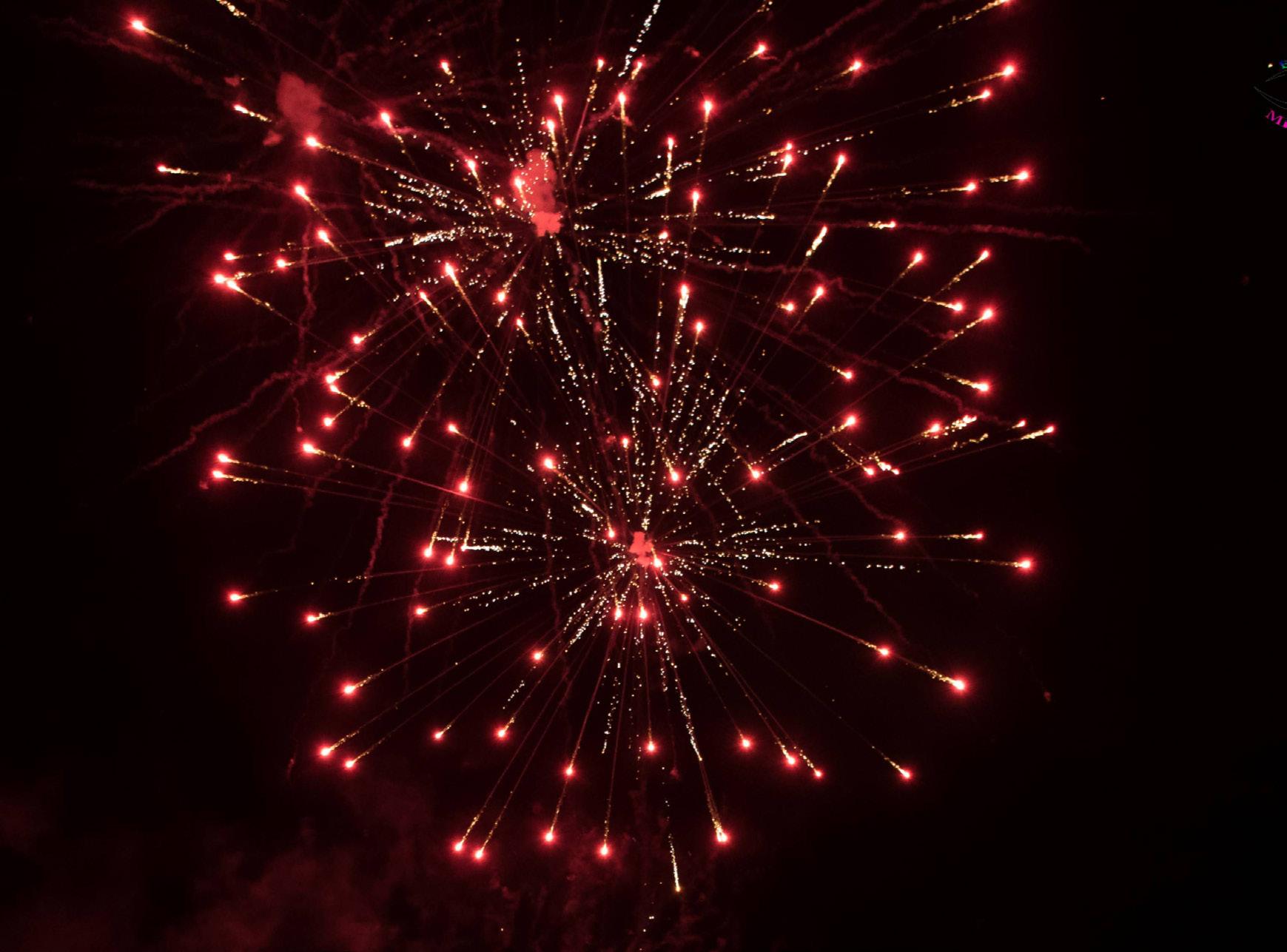
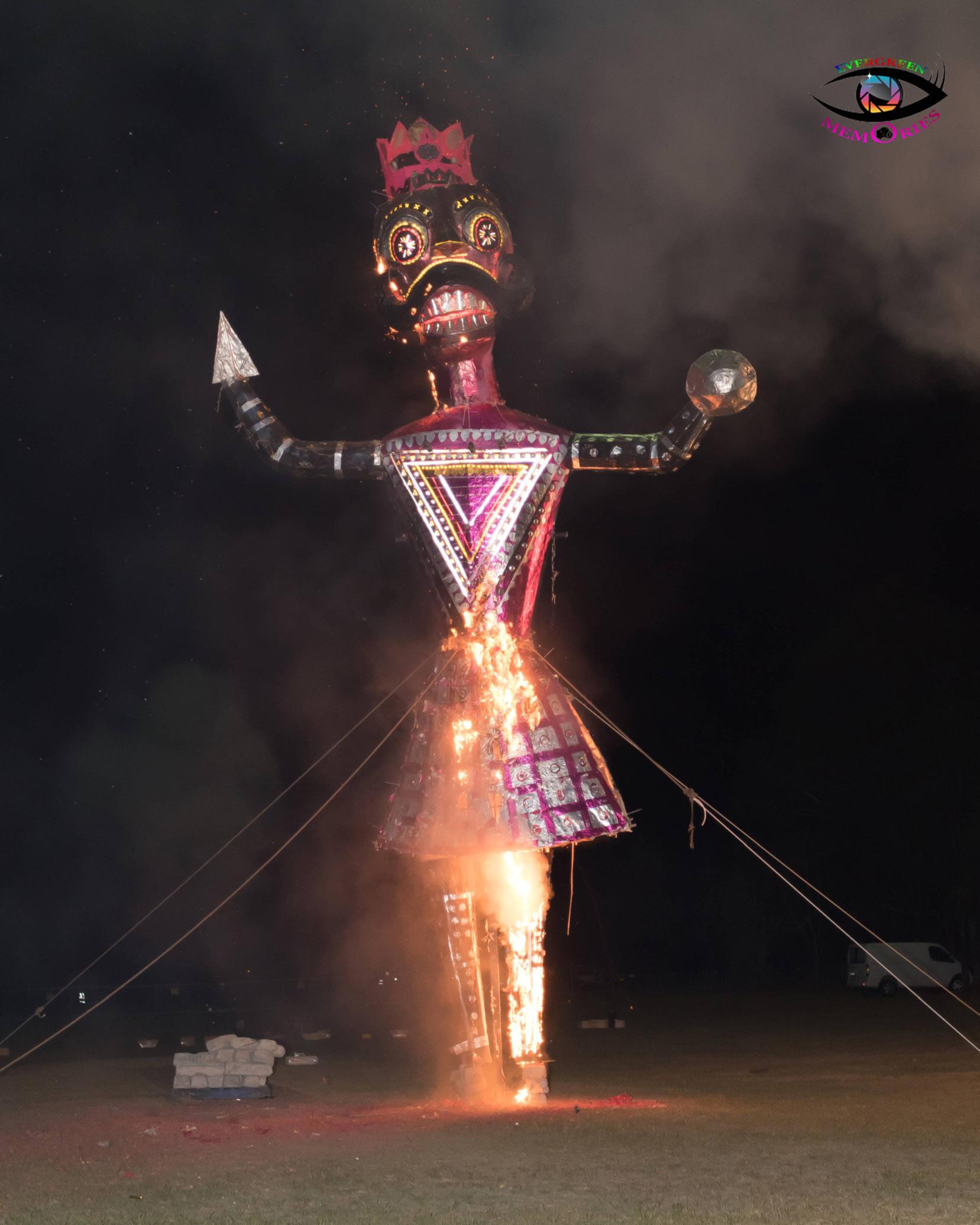
Snapshot moments from Hindu Council of Australia’s Diwali Fair held at Parramatta Park
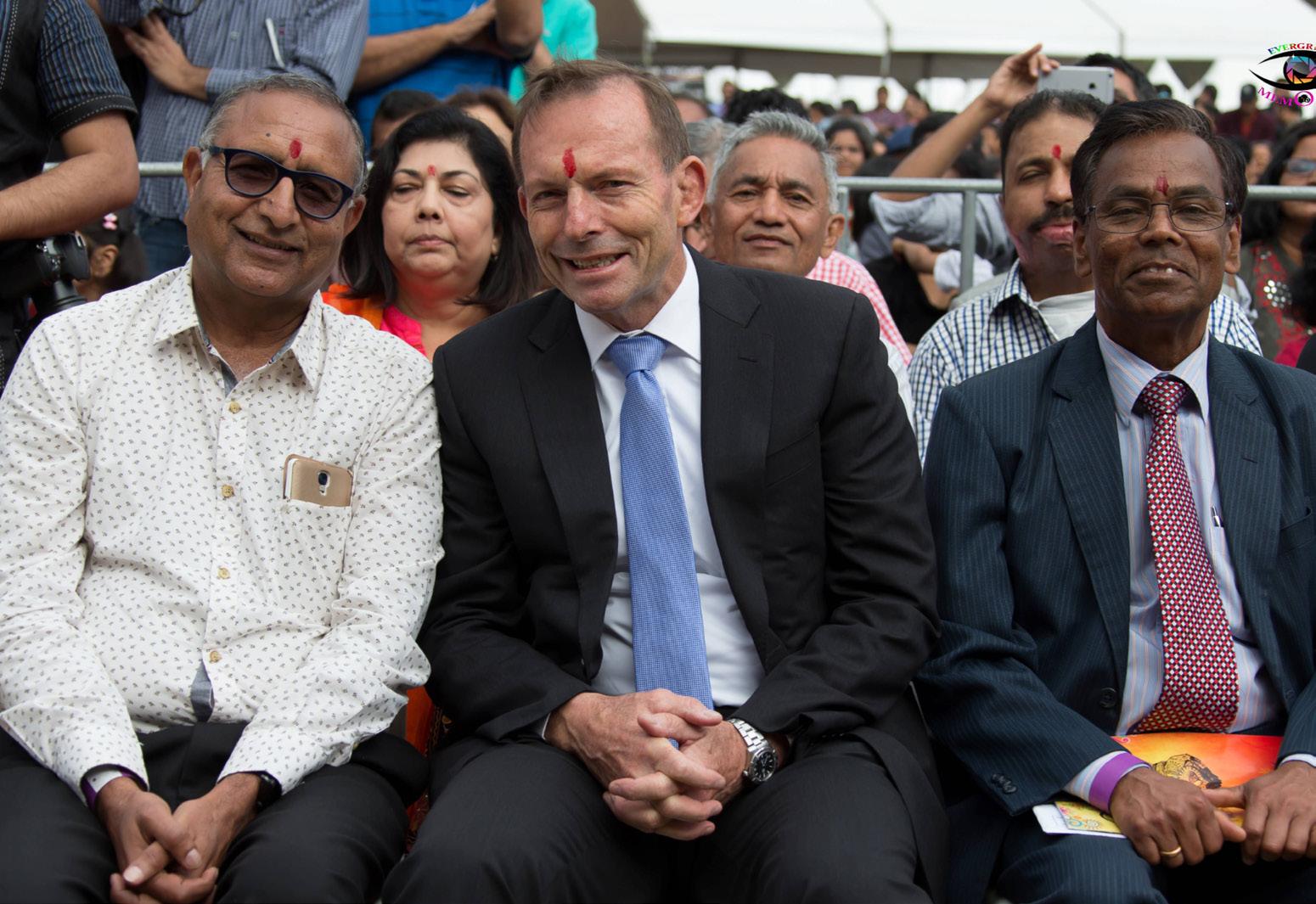
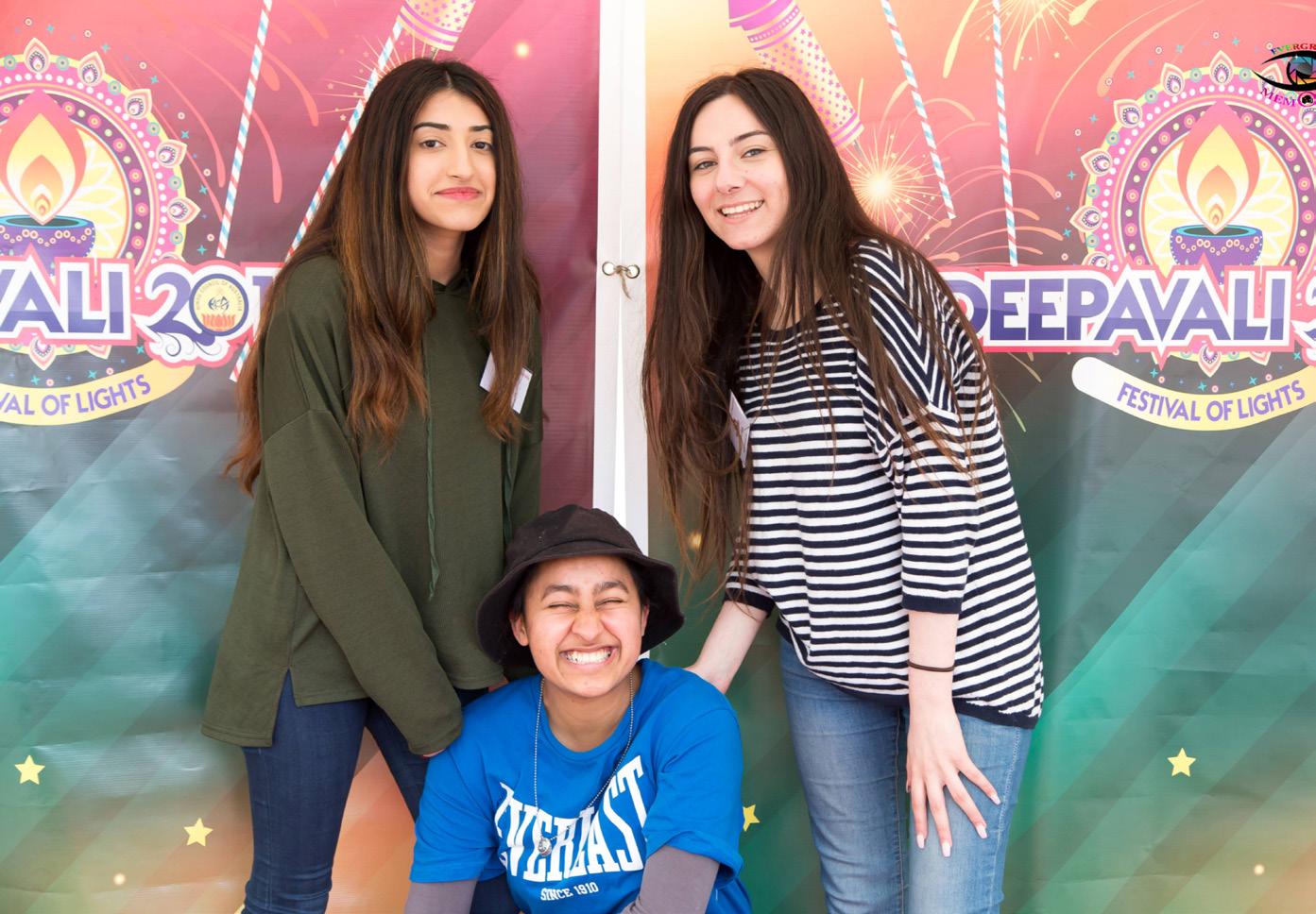


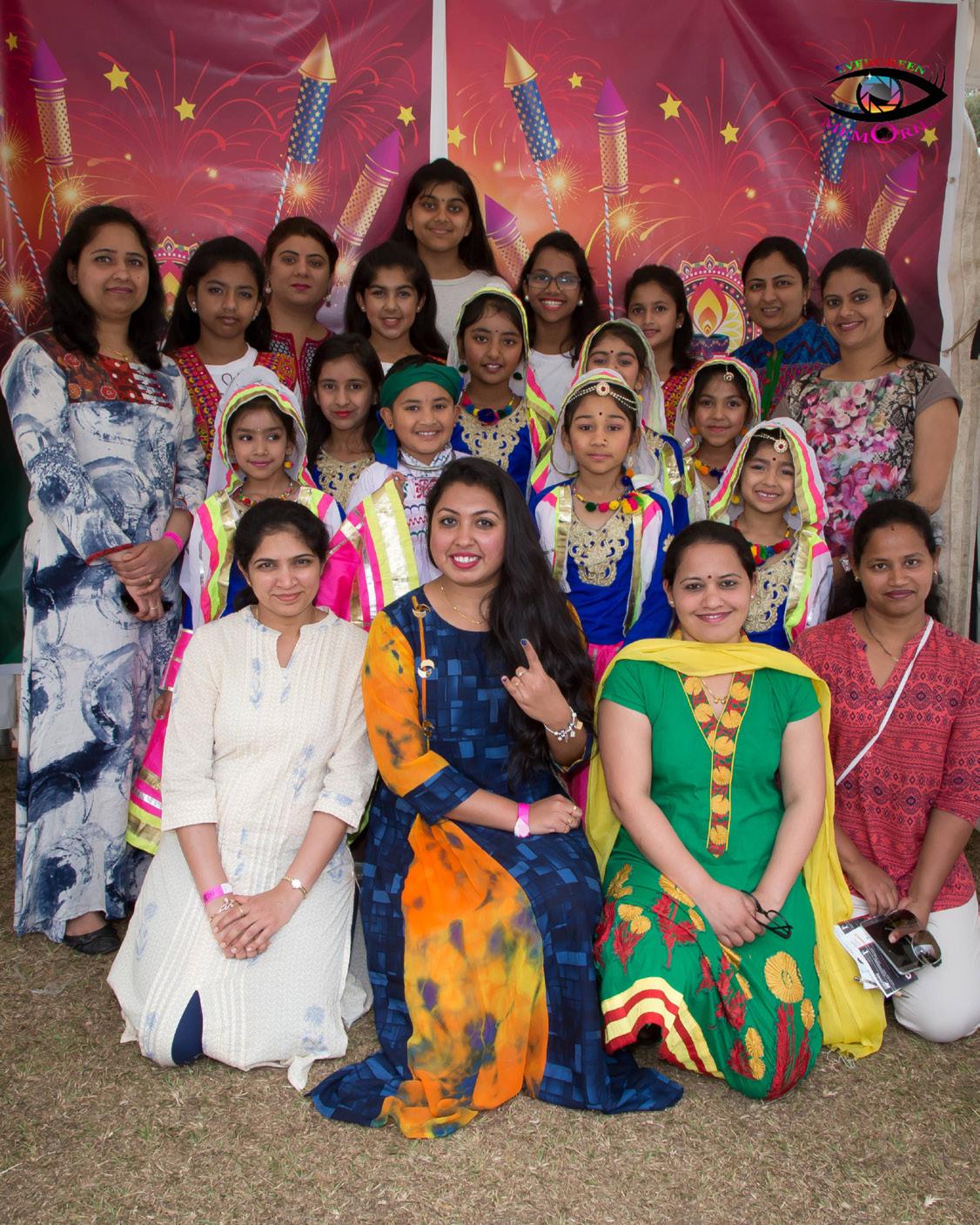
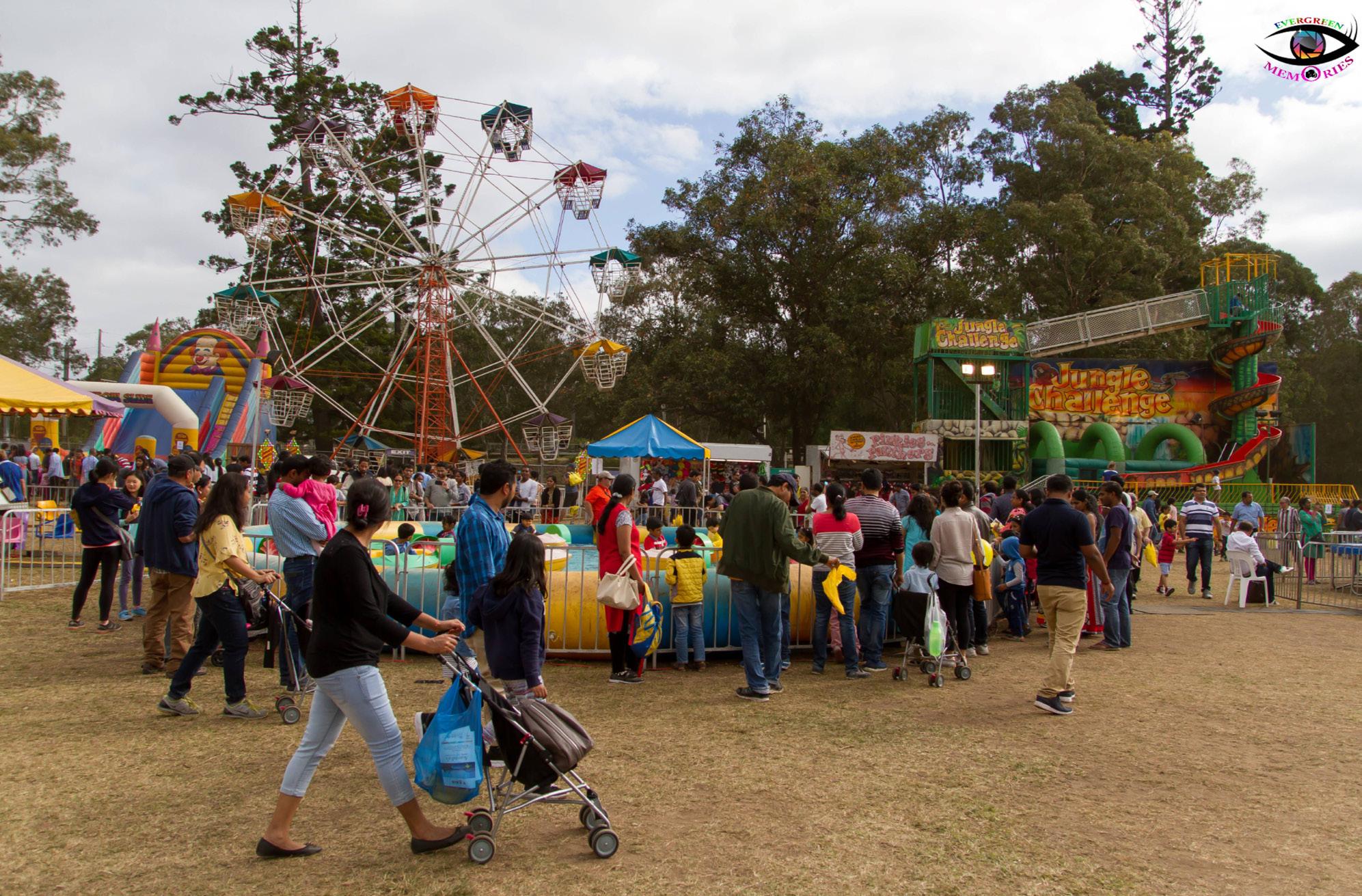

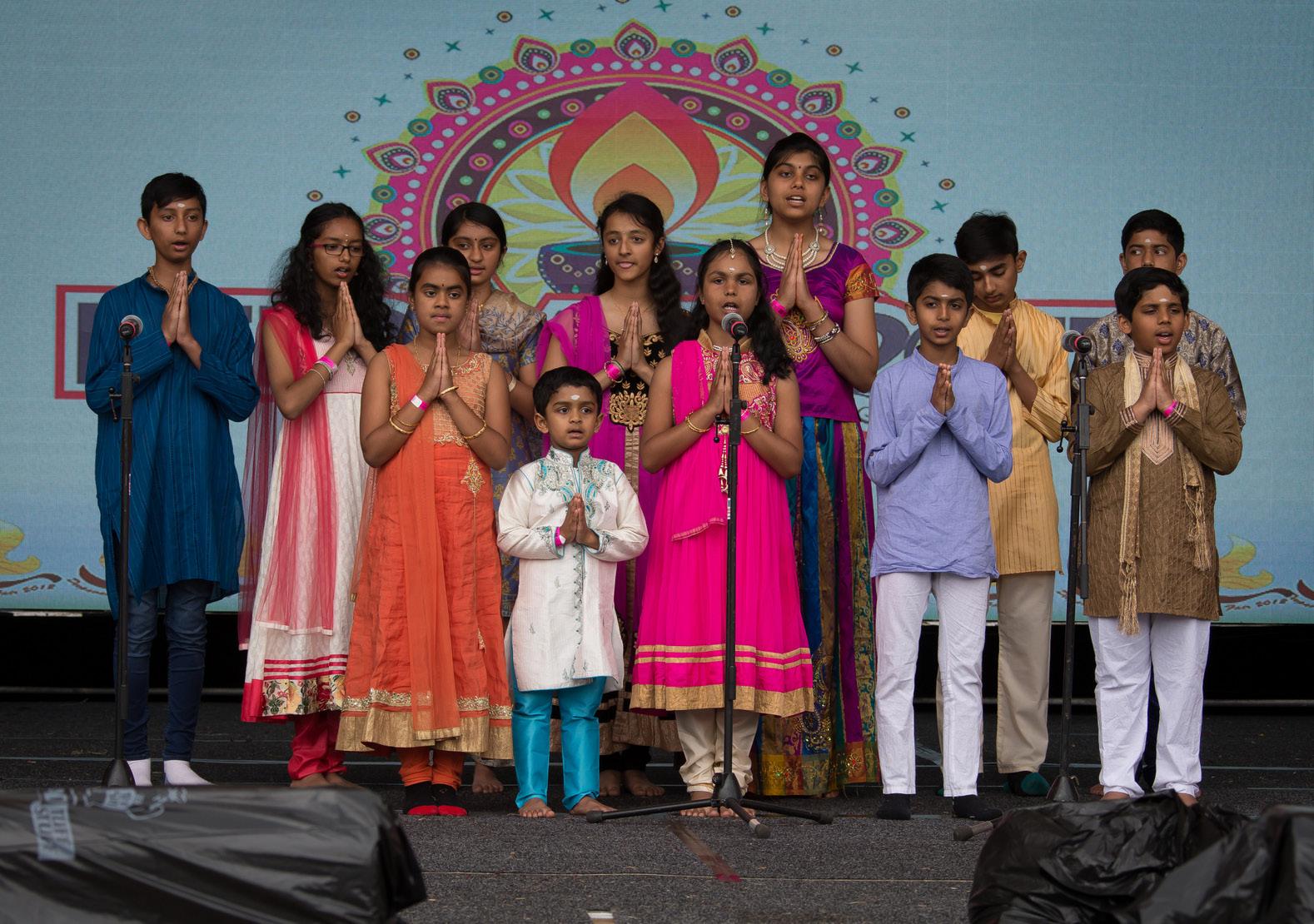
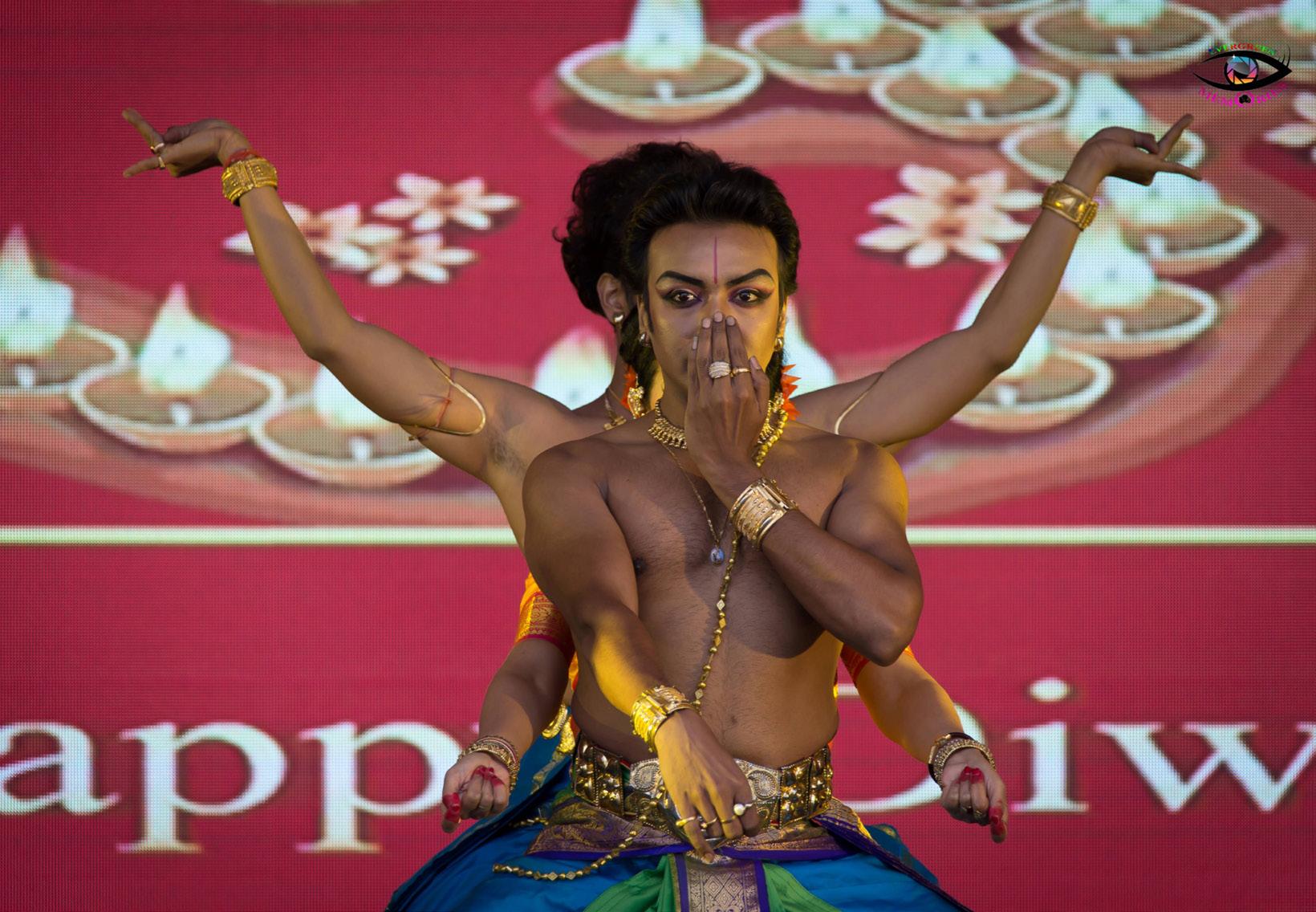
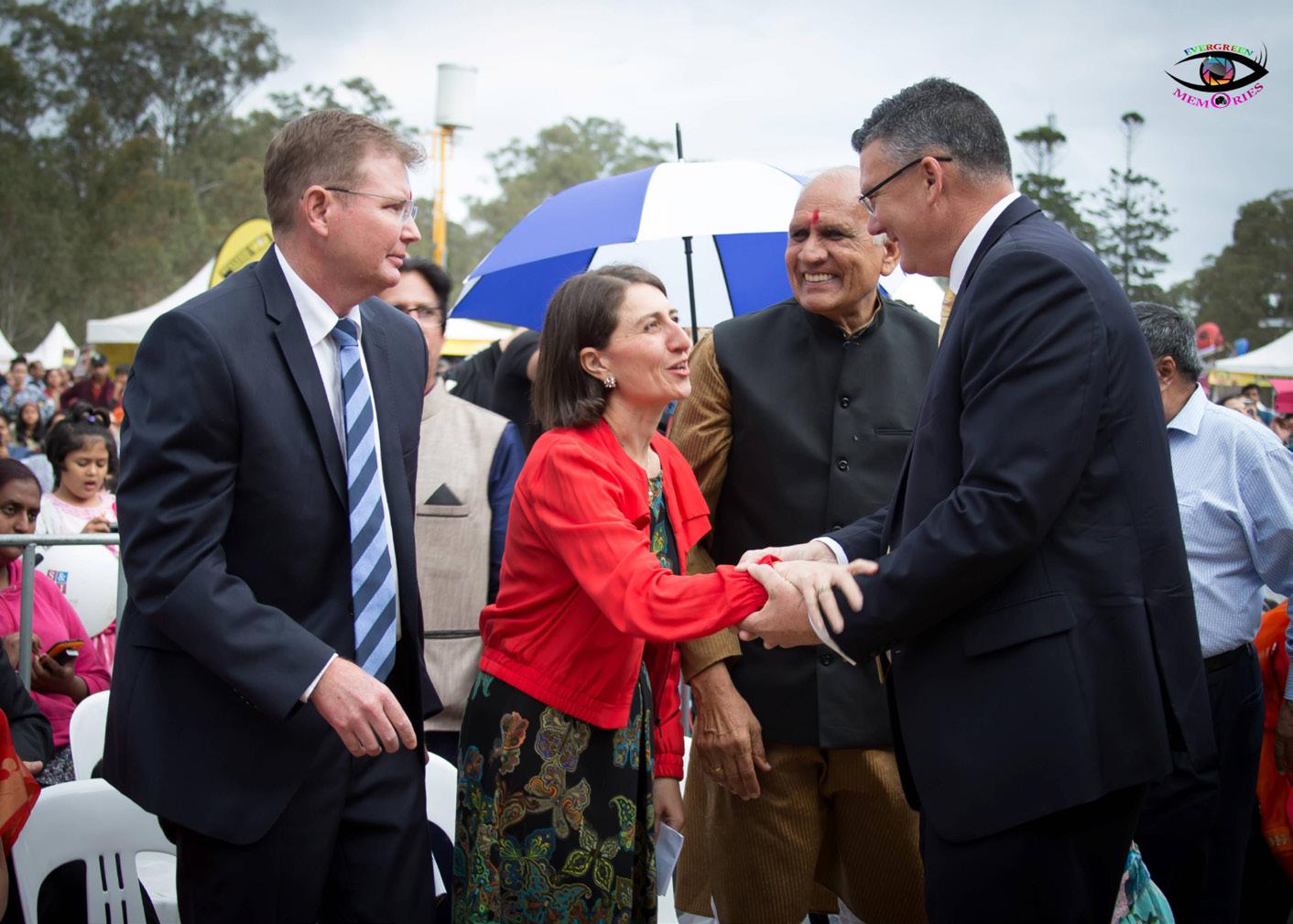
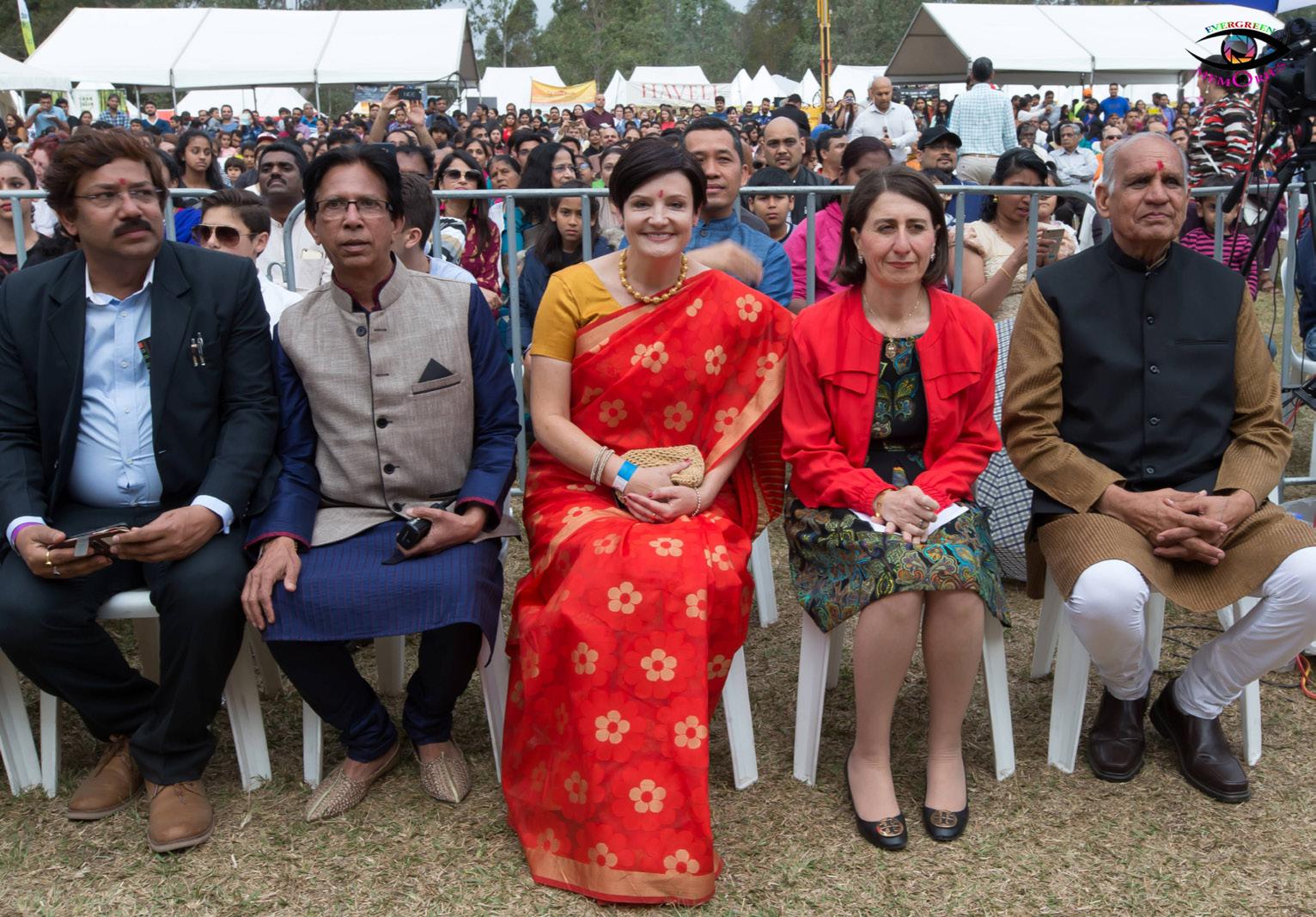
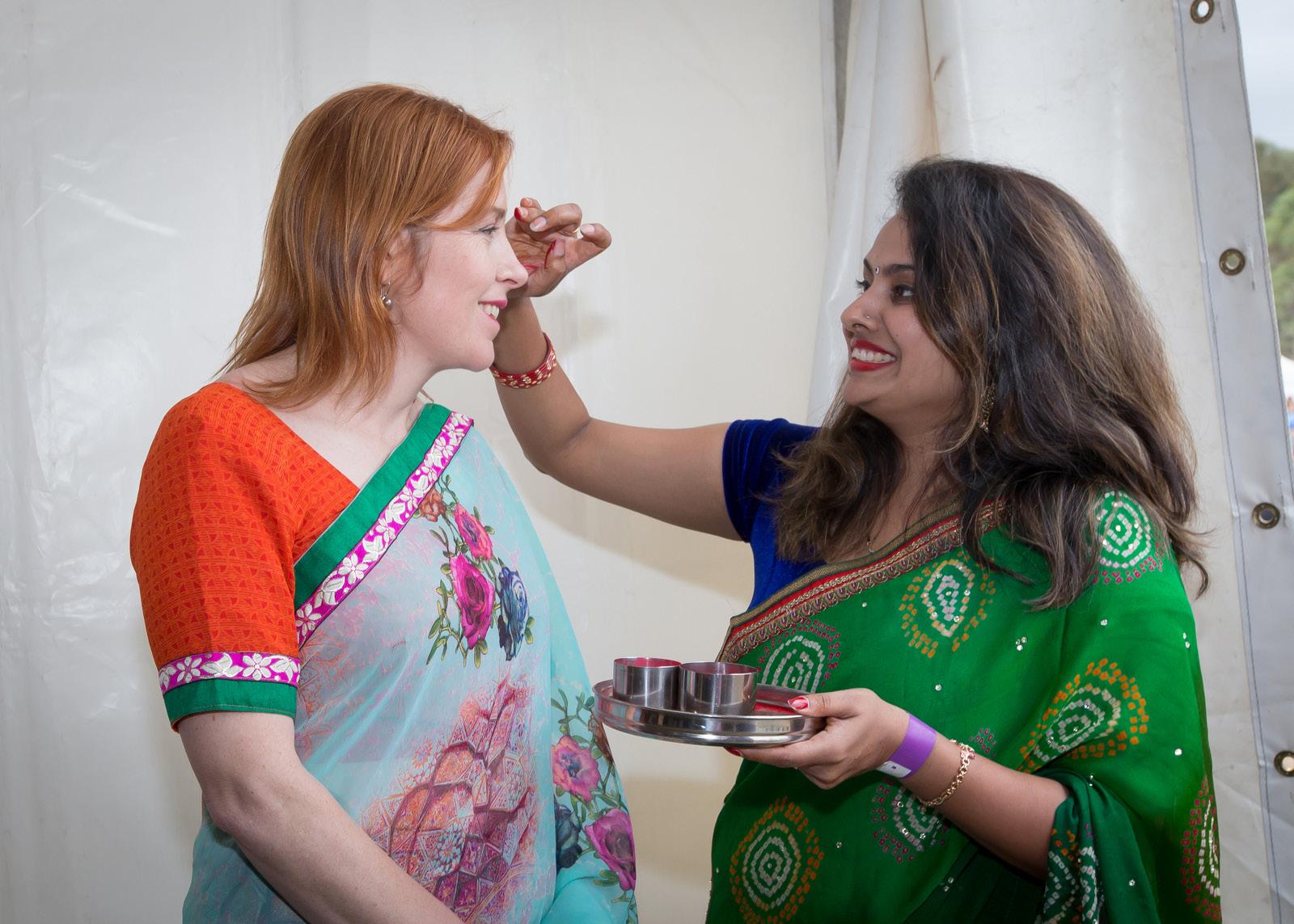
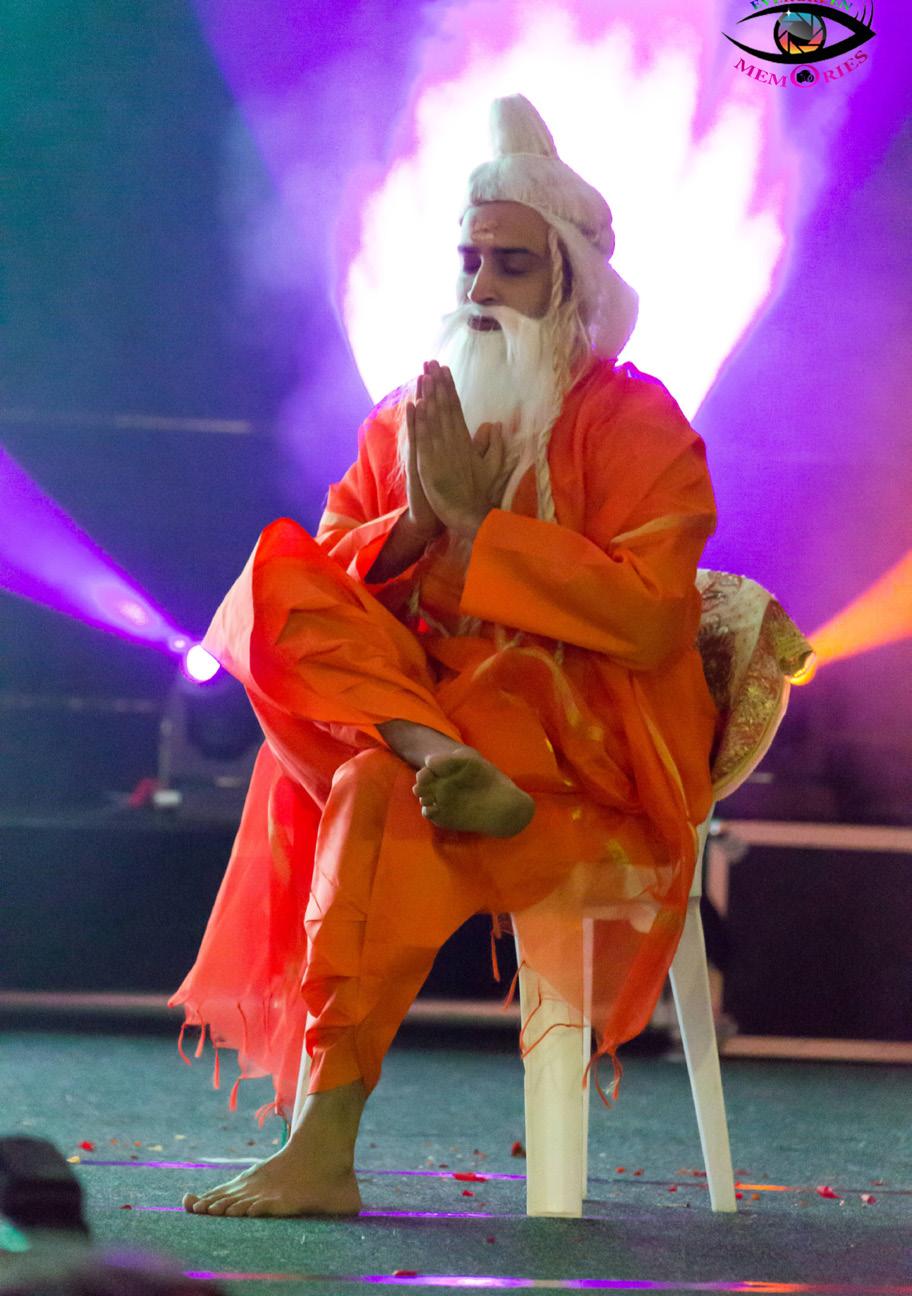
True freedom is best witnessed when the minorities in a society can raise their voices without repercussions from the establishment. The Indian community in Australia had a taste of such freedom recently. Hindus of Indian origin, despite being an ultra-minority in this country, turned up in healthy numbers to express their opposition to the Meat and Livestock lamb ad. The protests caught mainstream attention and politicians of all parties expressed support. Some of the protestors’ energies were spent in a futile attempt to get the ad banned, which is really a hangover of the ‘ban’ culture in another part of the world. Nevertheless, the best outcome of the episode was proof that minorities in Australia enjoy the unrestricted freedom to protest without a fear of violent backlash.
Granted, the lamb ad was a harmless distraction for the average Australian who did not care enough about the outcome. Another minority issue, a thoroughly mainstream one, of the British statue inscriptions raised by Stan Grant of ABC provoked rigorous debate and hot tempers. Even that was largely devoid of threats,
violence or economic blockade. Contrast this with the incidents such as the assassination of Gauri Lankesh in India just for being a contrarian or Donald Trump’s call to fire the kneeling NFL athletes in the US, and Australian freedoms shine in the brighter light. When the majority starts reacting viciously to those who dissent, the idea of freedom becomes an illusion. The implicit message is, you are free only until you agree. Especially in the Indian context, it is essential to preserve the freedom to disagree, given the diversity of cultures, languages, and religions in the country. Disagreement is inherent to Indianness. It’s impossible to get the whole country to agree on any one thing and the argumentative Indian takes pride in being adversarial as a matter of principle. Disagreement was also one of the most active tools of India’s non-violent freedom struggle. The civil disobedience movement, for example, was built entirely on the idea of peacefully disagreeing with the law of the land.
A couple of months ago, a remarkable document from 1930s India surfaced from archives and was shared on Twitter, shining the spotlight on the disobedience movement. The document showed a list of freedom fighters sentenced to prison by the City Magistrate of Bombay for violating a government ordinance. The offences were flimsy, but the punishment was rigorous. The British colonialists were bent on crushing dissent and imposing order. The draconian laws had very little effect on
the freedom fighters who not only broke the law openly, but also did it in style, as the document shows. The names on the prison manifest are remarkable, to say the least. Not needing to prove their identity, prisoners renamed themselves ‘Son of India, God’, ‘George V Ram’ (King George V was the British regent in 1930), ‘Zindabad Mahatma Gandhi’, ‘Inkhilab Mahatma Gandhi’, ‘Bharat Shevak Mahatma Gandhi’ etc. for the court records. It is a fascinating window into the thinking of the foot soldiers of the Indian freedom movement. Freedom is a sanguine concept. It evokes powerful, positive imagery - people in pastel coloured clothes, glowing with laughter, running through lush green fields; soldiers saluting a fluttering flag; perhaps a famous singer blowing up her lungs singing an anthem. Freedom always looks good visually, particularly on TV. But, is that the freedom ‘Zindabad Mahatma Gandhi’ yearned for? In 1930, Indians weren’t actively seeking a full exit by the British. They were only aiming for better representation in lawmaking, to put it bluntly. No matter the lesser cause, the protesters were happily filling up the prisons by violating the civil law and in the process, experiencing a freedom they didn’t have - the freedom to disagree.
Seven decades after independence, some Indians are still fighting for that right. British-era laws such as sedition have seen a resurgence in recent times. Sedition is now unapologetically used against political protesters while the government runs
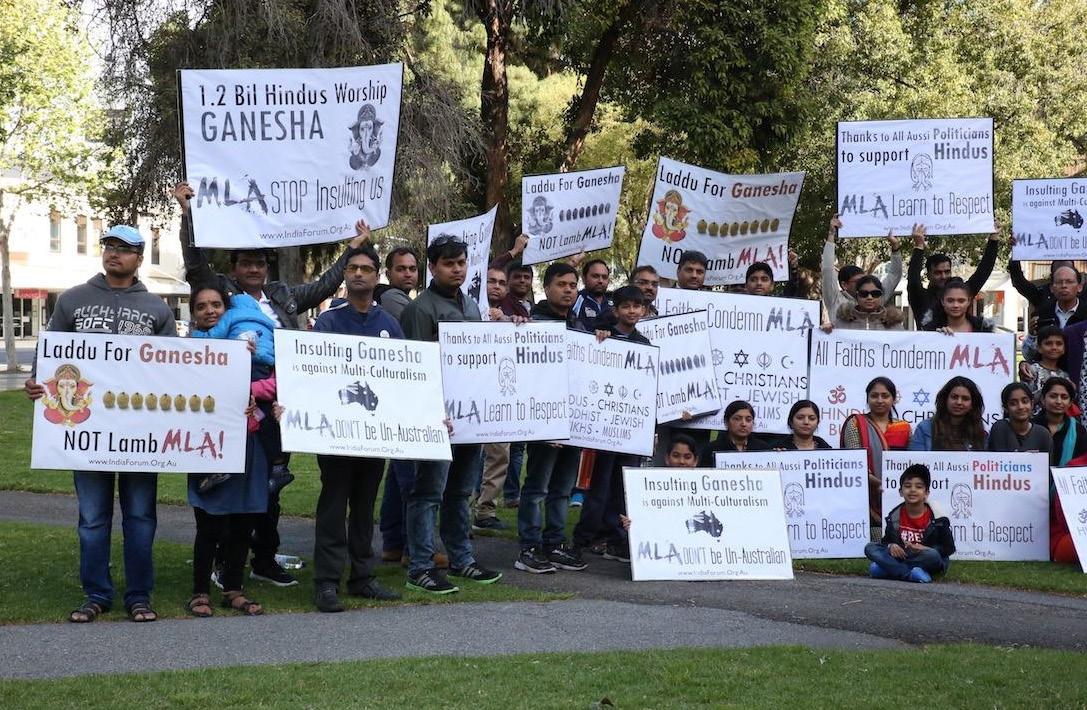
amnesty schemes for armed Naxalites accused of murder.
Rationalist voices are being silenced through terrorist tactics. More shockingly, these atrocities have widespread public support in the name of ‘order’. Decades of corruption, poverty and political inaction are making Indians forget the roots of their independence struggle. They seem to be ready to surrender their freedoms in favour of ‘order.’ The same old ‘order’ that the colonialists promised, peddling the same old arguments - ‘agree with us and enjoy peace, enjoy prosperity; disagree and face prison.’
Indian Australians can perhaps use their recent experiences to remind their friends and family in India that the real test of freedom is dissent, not silence. Minorities with limited political power need the freedom to express themselves without fear of repercussions or their freedom lacks meaning. Protest against your government, criticise an ideology, ridicule politicians and if you are not forced to go into hiding for the fear of personal safety or incarceration, you can be sure you are free.

The best outcome of (the lamb ad protests) was proof that minorities in Australia enjoy freedom to protest without a fear of violent backlashAustralia’s Hindu community felt free enough to protest MLA’s recent lamb ad. Photo: Facebook
 BY JYOTI SHANKAR
BY JYOTI SHANKAR

Consider this. Your quarterly electricity bill used to be around $300 but you are shocked to see current bill rise to $450. You chide your family members for leaving their mobile chargers, laptops and TV on all day and you shiver in the cold as you restrict heater use this winter.
Wastage of energy is no doubt bad but shouldn’t you be able to enjoy the little conveniences of modern life? This is certainly possible when you have free energy being generated on your own rooftop.
As prices of electricity continue to be on the rise, people are literally taking power into their hands by installing solar photovoltaic (PV) systems on their rooftops. Many households who were early adopters of the PV technology enjoyed years of low bills with a generous feed-in tariff of up to 60 cents/kWh, but all this came to an end on 31 December 2016 for those in NSW. Solar households have seen an increase in their bills but for those yet to install solar PV on their roofs, the onset of winter with increased heating costs and the announcement of higher electricity prices by most retailers from 1 July 2017, it’s a double whammy.
Should we install solar PV? Should we take up battery technology? How do we make the best use of our solar generation considering most family members are out during the day? These are few of the questions that come to mind. The decision is big and can have a lasting impact on your future energy costs.
Experts have calculated that an average electricity bill of $500 a quarter, increasing at 7% energy inflation, over the time of solar panels warranty of 25 years, will cost you over $135,000. Therefore, investing in solar PV makes perfect financial and environmental sense.
Solar energy is renewable and nonpolluting. Currently, experts say that one should go for the largest PV system possible. The actual size you can install on your rooftop would be determined by many other factors such the roof tilt, shading from surrounding trees, orientation of the house, and, of course, your budget. The payback is on an average around five years. You don’t have to worry that turning up the air-conditioning on a hot summer day or cranking up the heater on a cold winter’s day will result in an energy bill that will break your bank account.
You can expect a 40 to 50% reduction in bills if you time your energy use to solar generating hours. For instance, appliances such as washing machines and dishwashers can be timed to run during the day and you can cool or heat the house before sun down.
So, we have free energy during the day from solar PV but what about when the sun sets? During the winter months, it gets dark earlier in the day. Most of our energy use is when we get home in the evening. If we could store the solar energy generated during the day for night time use, it would make more sense. This is where battery storage comes in. Should we invest in this right away? Probably not, unless you have some money to spare and you are one of those early adopters who love new technology. A compact battery system for an average household costs around $10,000. The payback averages around 12 years. This does not cover its warranty period and hence it makes sense to wait for a further price drop. Battery technology is improving
by the day. That said, a hybrid solar PV system with battery storage may still make sense for heavy energy users.
An installer accredited by the Clean Energy Council (CEC) should be able to work this out for you based on your past electricity bills, roof space, time of use and other factors. Always seek at least three quotes.
Your local council may offer free solar advice. They also often organise events where you can learn more about solar and battery technology from experts. Empower yourself with knowledge from websites such as Renew Economy and One Step Off the Grid. Websites such as Solar Quotes have a list of questions to consider and ask a solar installer. CEC’s Guide to Installing Solar PV for Households is an essential read. The future for solar energy is bright.
• In 2016, small-scale solar was responsible for 16% of Australia’s clean energy generation and produced 2.8% of the country’s total electricity.
• 752 MW of new solar capacity was installed in 2016, an increase of 7% compared to 2015. More than 1.64 million small-scale solar power systems were installed across the country by the end of 2016.
• Australia is one of the sunniest continents in the world. Given a stable policy environment, there is massive potential for solar PV to make a significant contribution to electricity generation in Australia over the coming decades.
(Source: Clean Energy Council)

A survey by renowned sexologist Dr MARGARET REDELMAN is asking Indian migrant women questions about sexuality, sexual health and men
In every corner of the world, when people live in groups, the problem arises as to how to control sexuality so that there is some inhibition or control of negative sexual expression which disrupts society and enough positive expression to allow for good enough sexual gratification and reproduction.

Sexuality is so much more than the behaviours between a man and a woman that are driven by the need to reproduce. Sexuality is the personal sexual expression resulting from the each person’s biology, psychology, family of origin experiences, social experiences both good and bad, personal sexual experiences both good and bad, and the cultural and religious variables within any particular group. No one culture has the ownership of the “correct” way to be sexual. And no cultural description is completely accurate of the whole culture or each individual within that culture.
Nearly universally, it is men who have shaped and who control the public expressions of sexuality. With the need to control lineage and property, men have determined what socially acceptable sexual behaviour is for women. The punishment for acting outside the proscribed boundaries has usually been severe.
When marriage is central to male status, the notion of ‘femininity’ becomes dominated by the female roles of wife, mother and, mother- and daughter-inlaw. Women are needed and valued for domestic and sexual roles. How, then, does each woman gain a sense of herself as a sexual being and learn how to express her sexuality in ways that please her within this setting? Sexuality is part of us from birth till death and we express it to others whether we want to or not. The question is - what do we express? There is much confusion about what is normal, what is acceptable, what is healthy and how to get the best for ourselves sexually.
How a woman feels about sex, sexuality and sexual relationships depends on many factors which come together quite uniquely for each individual woman. These factors include each woman’s unique physiology (how easily orgasmic she is), psychology (anxiety levels), family of origin role modeling (was her parents’ marriage happy), her experiences of sexuality in her environment (what was she taught at school or shown in films), the person/s she has had experiences of sexuality with (being praised, told she is valued, beautiful, sensual) and her partner’s experiences and sexual competence (how confident and able is he with his sexuality). The experience of happiness in life is often dependent on relationship wellbeing, which, in turn, is often dependent on sexual wellbeing.
Good useful sex education includes specific sexual content about female physiology, menstruation, childbearing, contraception and how women have successful sexual relationships. In reality, it is most commonly composed of myths, jokes, fears and denial of the existence of female sexuality except as a service to be provided to men within the boundaries of marriage. All religions stress the woman’s obligation to fulfil her sexual duties within marriage but are poor on teaching how this should be done well to enable pleasure for the woman as well as her husband.
Today, especially in Western cultures, women are being given greater freedom to be sexual within themselves, greater freedom to choose who they express their sexuality with and are more entitled to

enjoy sexuality for themselves apart from the provision of a sexual service to their husband. How this is incorporated within each woman’s sense of what is “correct” for herself and her family is an interesting creative journey for each woman.
The ideas and beliefs each woman has about sex, sexuality and men are important and are needed to help educators give the appropriate sexual education for each cultural group. This questionnaire has been developed to understand what Indian women believe about the penis. There is no
right or wrong answer and all the answers are confidential and will be added together to give statistical values for the group. Your participation is greatly appreciated and the results will be made available. The survey is at https://www. surveymonkey.com/r/iwpofps
(Dr Margaret Redelman, OAM, works as a Sex Therapist and a Relationship Therapist in private practice in Bondi Junction. She is on the executive committee of Society for Australian Sexologists (SAS) and has held multiple executive positions in the Sexual Health field including President of SAS NSW in 2014 to 2016)
All religions stress the woman’s obligation to fulfil her sexual duties within marriage but are poor on teaching how this should be done well to enable pleasure for the woman as well as her husband





















 BY PREETI JABBAL
BY PREETI JABBAL
With her latest literary offering, Meera Rising, Melbourne writer Nandita Chakraborty folds myth into modernity to create an interesting tale of a modern Mirabai. The book is inspired by the life of Mirabai, a 16th century Rajasthani princess renowned for her devotion for Lord Krishna.

Mirabai was known for her compositions dedicated to her beloved Krishna and for breaking traditional boundaries for her spiritual yearnings.
Nandita, who conducted a three-year research into the subject of Mirabai, claims her novella is not so much a book of God as it is a book of love.
“I have nieces and nephew who are millennials born and brought up here. It will be too blasé to put a culture in front of them that they don’t understand at all. So I decided to tell them a tale of love that they will relate to,” said Nandita, sharing the main reason why she wrote the book. “I want to convey through this book that God is not a myth but just a higher form of love,” said Nandita.
The book’s main character Meera Sen lives in Australia and returns to her homeland India to reconnect with her family.
Meera’s journey of love starts with Walkley award-winning photographer Brian who wins her heart despite starting off on the wrong foot. The passionate relationship that ensues, however, does not end in happily ever after as Brian succumbs to his insecurities and drives Meera away.
A heartbroken Meera returns to her parental home in India to be married off to Vikramaditya. Life, however, has other plans for her and another tragedy leads to the rebirth of Meera.
Similar to Mirabai, Meera’s soul mingles with the divine as she finds an awakening and expansion of love beyond the physical. The book continues to dwell on Meera’s spiritual unrest and inner quest for fulfilment. The characters in Nadita’s book are few but complex and interesting.
This is Nandita’s second book. Her first self-published book Missing Peace: Love, Life and Me was drawn from her personal journey, shades of which are also found in Meera Rising.
Nandita was born in Kolkata and she started writing from the age of 9. She wrote a letter to the then Prime Minister Rajiv Gandhi and was delighted to receive a response from him that inspired her to continue writing.
“As a middle child, there was certain madness in me and I considered being normal as being lifeless,” said Nandita, sharing her personal story. “I expressed my feelings through writing,” she explained.
“I cannot be Tagore nor Shakespeare, I am simply me. I write what I feel and hope that it is relatable and readable,” said Nandita, when asked what literary flavour she brings to the table.
In 2010, when Nandita was in India, she watched a 1940’s movie on Mirabai and was
intrigued. She embarked on a three-year research into the life of Mirabai, curious to know everything about her. The seed for her second book was sown.
Nandita’s own story interlinks writing to therapy as she found solace in writing again after suffering a serious brain injury that led to permanent cognitive disability.

In 2011, while rock climbing with friends, Nandita fell from a height of 40 metres and fractured her skull. Her initial recovery took 9 months in rehabilitation. In 2016, she had to return to rehab after she found herself lost on Melbourne streets with no memory of who she was.
“For a few minutes, I had no idea who I was and where I was going. I looked at the phone in my hand and that triggered the return of my memory,” said Nandita, recalling the horror of her predicament. Post another lot of rehab, she continues to suffer from a blind disability along with other related complications.
According to Nandita, her psychologist Dr Joseph encouraged her to start writing again as she had given up writing during rehab and was suffering from mental health issues. Nandita is very thankful to him and the Royal Melbourne Hospital Community
Services for supporting and assisting her during her long recovery.
During the recent launch of Meera Rising, hosted by Busybird Publishing at Montmorency, Nandita shared her story with family and friends and many supporters. Author-screenwriter Les (Lazarus) Zigomanis, the Publications Manager and Chief Editor at Busybird Publishing, officially launched her book.

According to Nandita, Les’s unstinting support has been very important to the development of her work. “He has been in this industry for over 20 years and I am inspired by his honest writing and defined voice. His novels Just Another Week in Suburbia, Pride, Overload are wonderful reads,” she said.
Nandita is currently finalising her third book, another story that straddles between two cultures. The plot revolves around an Indian Muslim Girl who falls in love with an Australian diplomat. They have a daughter Rosemary who is brought up in an orphanage. She grows up and returns to Melbourne to seek revenge, hence the title Rosemary’s Retribution.
Nandita is currently all set to travel to Paris ‘to interview a lot of 70-year-old French men on their take on life’ for her next project and a tale that she has always wished to tell.
Nandita’s story, like that of her protagonists, is about bouncing back. For those open to receiving guidance within the pages of her books, Nandita has one simple message for all: you need to love yourself first in order to find a higher form of love.
I have nieces and nephew who are millennials… I decided to tell them a tale of love that they will relate to Nandita ChakrabortyPhoto: Ravinder Singh Jabbal
Most educators use smartphones throughout their day. They communicate using email, utilise social media is various forms and drive cars that carry embedded computers. They also utilise spelling checks and grammar tools offered by Microsoft Word and other programs. It is clear to most educators that computer technology is developing, and adapting to it is necessary. For those educators expressing discontent over computer automated marking, it might be wise to consider its benefits prior to disparaging the concept or making claims based on fear and anecdote.
Whilst it is true that adaptive technologies cannot yet wholly or accurately mark all forms of creative writing, educators should be open to working with technology in the interests of advancing educational outcomes, productivity and efficiency.
Computers have been marking aspects of student assessment for well over a decade. Automated marking has become increasingly sophisticated. It is likely

that every adult in Australia will have experienced exams, competitive tests such as the Australian Mathematics Competition, externally set school exams and even done their driving test, where computers were integrated into the process of marking. No one argues that the computer marking of so-called ‘objective response’ multiple choice questions is a problem, despite issues arising annually in every Year 12 exam featuring multiple choice questions where some of the questions may be open to interpretation and ambiguity. Nevertheless, educators have not stopped relying on computer marking as a result, even when there is confusion or disagreement with how questions are framed, and even the proposed ‘acceptable’ responses. In terms of creatively written tasks, the notion of computers marking creative writing seems to have generated significant resistance from some educators. However, this resistance needs to be assessed in the light of what is currently done in external assessment. For written tasks on external exams (such as the Year 12 HSC in NSW) teachers will be briefed to mark to a standard from a pre-determined marking guideline and will then be allowed to mark from home at night after school, and on weekends. It is possible that a marker may be sipping on a glass of red wine while The Bachelorette or other television show may be on in the background, while reading and marking scanned scripts online.
There is a requirement that teachers mark in the order of ten essays per hour, marking out of 20 or 25. Most items are marked once. If items are double-marked, which is occurring less frequently, then a margin of disparity between markers is allowed. The margin can vary as much as 15% above or below the first-given mark, meaning a variation of up to 30% can occur if three people mark a response. When it comes to creative tasks, it can be very difficult for subjectivity and discretion not to affect how a marker allocates marks, even on a predetermined criteria set.

Algorithms will be programmed to ‘recognise’ particular forms of writing, choice, use and order of words. There is academic evidence supporting the accuracy and efficacy of computer-based marking for written work.
It is probable that algorithms will read ‘preferred’ forms of writing and, in this context, it is incumbent on authorities to disclose what forms of writing are acceptable. This should be publicly available to ensure equity and access.
Lexical, syntactic and semantic features are three important aspects of creative writing - but not all of them. A consideration for assessors and educators should be that the actual work has to be typed in order to be marked by computer and so a question arises as to whether the same creativity can be brought to typed tasks as hand-written tasks. Consider, for example, a creative piece that has been written in non-linear or nonrational (that is, creative) order as an aspect of the creative element.
Moreover, what if as an aspect of creativity, a child utilises SMS text and abbreviated speech that scores poorly on account of syntax but is actually valuable in the context of the piece?
The issue here is the ‘outliers.’ However, outliers at present still get penalised through the inaccuracies of the human-marking process. Having been a marker of externally state-run tests, I can state from experience that even amongst humans, there are significant disparities in marking, even when marking against a set of ‘objective standards.’ Therefore, a robust hybrid approach should be favoured with extensive human-marked sampling for validation. Included in this should be that all students not achieving requisite standards should have their work marked by teachers as well.
Educators should be interested to understand how adaptive technologies can ‘read’ creativity and the elements of persuasion. It is very common for people to be sceptical about the uncertainty that change can bring. However, for the metrics that can be derived from clever design and application, the outcomes for students can be extremely beneficial, more targeted support and improved evidence for rich teaching helping educators to use their resources and energy wisely.
‘‘

 BY ANANYA WAKHARE
BY ANANYA WAKHARE

Sadly, time flies even faster in the holidays… But hey, let’s look at the bright side, I had a pretty cool break.

On the first day of my holidays I was invited to a school friend’s place. It was kind of the first time I went over to a high school friend’s house. I was especially excited not only because of this but also because she owns 14 birds - 13 chicks and a budgie! We got to play with all of them. It was such fun and my favourite bit was hugging the chicks, they were just too cute! I couldn’t believe how quickly the day went with little feathered friends!
I did some serious stuff too. Most people that know me say that I’m a shy person, so to I was dispatched off to a two-day public speaking course. The course was at Shore Grammar school, so I went to North Sydney two days in a row. To be honest it felt like school in the holidays, I wasn’t sure what to expect. Turned out it wasn’t that bad after all. They taught skills with the help of fun activities that ultimately made me feel confident. I especially liked selecting talk topics and preparing convincing reasons. There was also heaps of fun because we played games and I made new friends too.

Next, the long weekend! Let’s just say we used our long weekend wisely, we went on a holiday! We went to a place called Kurrajong and stayed in a sprawling house which was simply beautiful. There was a huge garden which took at least half an hour to explore. We also played badminton which made me feel very sporty after a long
And last but not the least I really did a fun activity which was art. I enjoyed it because it made me forget all the stress and feel rejuvenated. I entered a couple of art competitions to add some thrill to my usual relaxing activity. Not sure what the outcome will be but let’s wait and see. During the holidays I’d also been to school one evening to look at the IB art students’ artworks, digital artworks and sculptures. It was amazing and they had
When it was nearly time up for the holidays I was surprised that I was actually looking forward to school again.
This term I’m playing volleyball (something that I thought I would never do in a million years). It really hurts but it is very satisfying when the ball you hit goes over the net because it’s so tall! I’m hoping to improve at this sport by the end of term and build stamina as I play three
The other exciting thing - Week 2 is going to be a week in Shakespeare’s world! The whole week I’m going to be learning his plays (with the rest of Year 7/8). On Friday, there will be a major performance for all the parents, and we will be the performers. I’m nervous already!

At my school we are going to transition into the next year in week 3, pretty cool, right? Terrifying at the same time but I can’t wait to see what Year 8 has in store for me. The next time I’m writing my high school diary I will be in Year 8 already, yikes! So, Year 8

Eight young dancers, students of Dhanashree Karandikar’s Kalashree Dance Institute, presented a joint Arangetram (debut) recently. They tell us here what dance means to them
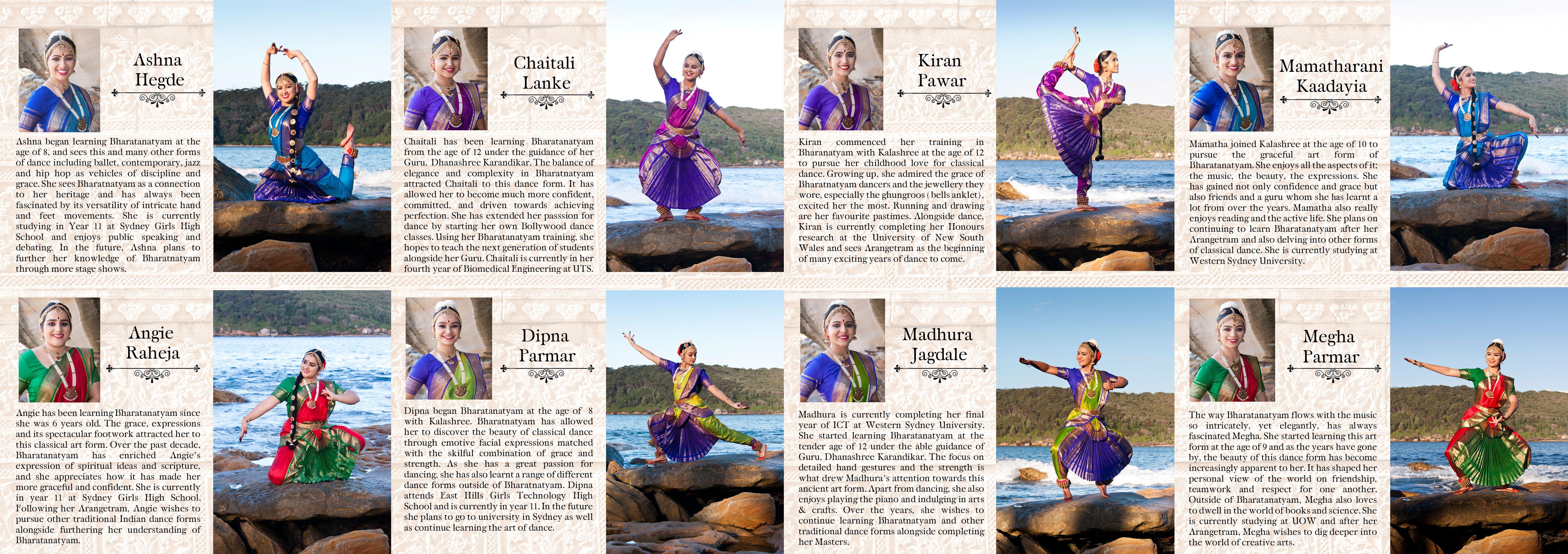


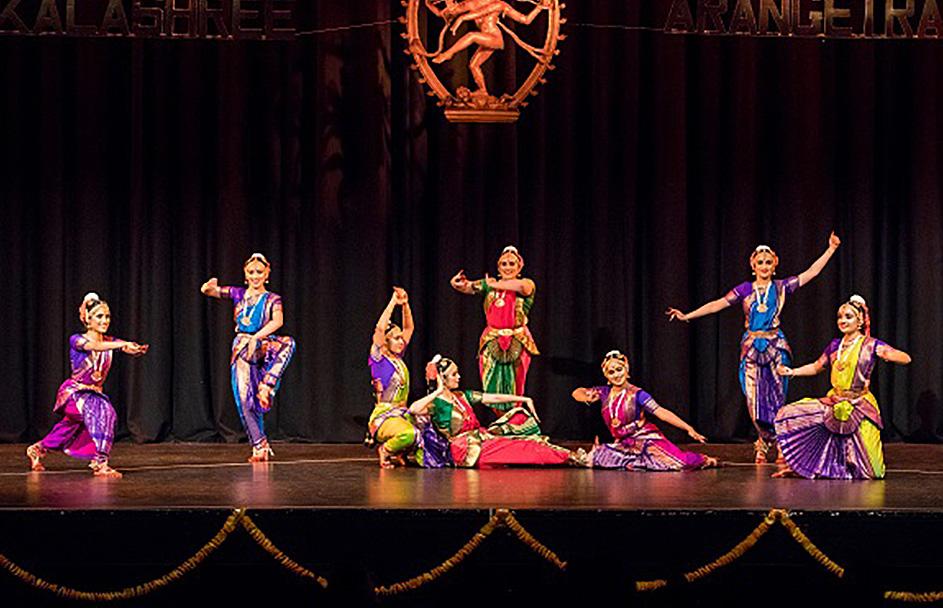
and stressful, but we would always push ourselves to dance our best - it was an extremely positive environment to be in. We came closer together as a group; this fostered an encouraging and friendly environment that not only increased our own motivation and the friendships we made, but also manifested in how we collaborated on stage.
Kiran We would practise on recordings of our guru’s singing from our phone in our garage that we specifically cleared out and arranged for dance (marking stage lines and formations too). We called ourselves the A-team and in this team, girls all helped each other outdriving the younger ones home when their parents couldn’t, picking up the busy uni students from the train station, with a snack to eat on the way. At times practice was really hard, with me doing full-time uni as a Medical Science Honours student with no university holidays. The co-operation and support

art.
Ashna I’m not a very sporty person, but I wanted a way to both get fit as well as learn the sort of grace and elegance that you can’t get from playing a sport, and dance seemed like the best option. Some may refer to dance as a sport or fitness, but it is so much more than this as it is an art: it’s a way to express yourself, and a way to connect with your own emotions and body on a much deeper level.
Kiran I began learning Bharatanatyam at the start of high school as a hobby and to stay active. I soon grew to love it and today it has become a passion.




Madura My dear friend Chaitali, who also just graduated with me at this Arangetram, influenced me to join this classical art form at Kalashree. Not to forget, the love and passion my Guru has for Bharatanatyam is just on another level and she has always been an inspiration for me to keep dancing!
Guru is specifically the one who has taught me values such as discipline, teamwork, sacrifice, dedication and perseverance. These everlasting values extend to other aspects of life, and I intend on utilising these principles in my day-to-day life. This elegant dance form has also allowed me to become more graceful and confident. It’s only the tip of the iceberg, though. I still have so much more to learn from Bharatanatyam and my Guru.
Ashna I have learned values such as hard work, dedication, sincerity, maturity and respect, which have carried over into how I approach things such like schoolwork, and my relationships. Bharatanatyam has also instilled a greater appreciation of the richness of Indian culture - it has helped me learn so much about my heritage both through the religious stories we have portrayed, but also the
lessons and values that have helped shaped my personality. My Guru is a disciple of admirable Bharatanatyam dancers, and I’ve been blessed to meet them and see them perform. Finally, in the year leading up to my Arangetram,
KIRAN PAWAR MADHURA JAGDALE MAMATHARANI KAADAYIA MEGHA PARMAR GURU DHANASHREE KARANDIKARBrother based in Sydney seeks suitable match for 39-year-old Mumbaiborn, never married Gujarati girl. 5’4”, well cultured medium built, B.Com and working for international shipping company in Dubai. Hindu grooms please. Contact on 0416475948 or komaldxb@gmail.com
Seeking a professionally qualified, settled match for Sydney-based, never married Australian citizen. Hindu, Punjabi Khatri 44, 5’3” slim, fair, attractive girl. Postgraduate and working on a good position in government organisation. Please send details with photo indsyd2016@gmail.com
Suitable match for a soft spoken and intelligent IT professional 32-year-old girl. Must be healthy, clean-looking and preferably Canberra-based. Pl SMS your interest to 0415948567.
Looking for a professional, well-educated, cosmopolitan, tall, Hindu groom (Australian resident or citizen) for a 32-year-old Telugu divorcee with no kids working in Bangalore IT MNC. Please contact on persephones84@ gmail.com or 0417 17 0487
Seeking professionally qualified match for fair, slim, beautiful, family oriented Punjabi Khatri girl. 37/5’2”, well qualified, working as IT Business Analyst in Sydney. Innocent divorcee having 11-year-old daughter. Caste no bar. Send biodata and pics to matrimonial4alliance@gmail.com or call on 0413820305
Sister based in Sydney seeks suitable match for 38-year-old/5’5’’ nevermarried Punjabi Khatri girl. Doctor by profession, vegetarian. Settled in India, but fine to move overseas. Currently in Sydney on holidays. Caste no bar. Email guruji2111@gmail.com or call on 0449785957
Seeking Gujarati match, either in Australia or abroad, with good family values, for a well settled accountant. Australian citizen, 42, 5’8”, divorced with no children. Vegetarian and non-smoker. Respond with photo and biodata to WhatsApp/Viber 0421 504 058 or email gujiaust@gmail.com
Seeking alliance for my son, 32-year-old male, 6’, Haritasa gotram (Dhanishta 4th padam), Masters in Design from IIT Kanpur and MFDI & MEM from Sydney, working in QBE Sydney as UX Designer. Looking for a slim, Brahmin girl from Australia/NZ. Contact +919848994624 or vemramkri@yahoo.com
A well-settled, clean-shaven 48-year-old (looks only 35) good looking, tall, slim. Senior manager with one of the four major Australian banks from a Jat Sikh family is seeking a lady with a view to marriage. Citizen of Australia and USA, good natured, sociable with a blend of Eastern and Western values. Caste and age no bar. Respond to param69@gmail.com
Seeking suitable match for Bengali boy, Australian citizen, 33 years old, 178cm, holding Masters degree, manager in a leading bank. Family wellsettled in Australia. Seeking well-educated Hindu girl, 25-31 years old. Australian citizen or PR. Please respond to matrimozind@gmail.com.
Manglik, handsome, vegetarian, slim, Australian citizen Punjabi Mittal boy 28, 5’9”. Well qualified, doing last subject of CPA working full time (Melbourne). Seeking beautiful, slim, vegetarian, professional girl. Any upper Hindu caste send full biodata with snaps. Contact +919888389431, 0468343708.
Seeking professional bride for Hindu Punjabi, US Green Card holder and Australian citizen. 35/6’2”, Masters in Computer Science, Consulting Manager in Houston. Schooling and university studies from Australia. Email biodata with recent picture to mgahir@gmail.com
Seeking a suitable bride for an Australian citizen Sikh boy, 42 years old (looks younger), 5’ 8½” with wheatish complexion. Whole family settled in Australia. Innocent divorcee after 1-month marriage. The girl should be 34-38 years old with family and cultural values. Caste/ religion no bar. Please email biodata with recent full length photograph to pleasecommunica8@gmail.com
• Skilled – independent and Australian sponsored visas
• Independent and sponsored visas for regional areas

• Student visas and graduate skilled visa
• Fiancé, partner and other family visa applications
• Business skill – Temporary, provisional & permanent visas
• Bridging visas
• Applications for Review and Appeals Tribunals
www.Taxrefundonspot.com.au
www.Taxrefundonspot.com.au
Accountants and Registered Tax Agent
Accountants and Registered Tax Agent
Tax return & Accounting Services:
We offer Tax Refund On Spot*, means Tax Refund in Options – 100% Online/Personal visit/ Email/Phone call


Tax return & Accounting Services:
2 Offices – Blacktown & Parramatta locations

We offer Tax Refund On Spot*, means Tax Refund in Options – 100% Online/Personal visit/ Email/Phone call 2 Offices – Blacktown & Parramatta locations
Get Cash in 1 Hour of your previous years Income tax return FREE tax refund estimate by our professional accountant
GST/ ABN /Company/Trust/Partnership formati
Open 7 days in July & August
Get Cash in 1 Hour of your previous years Income tax return FREE tax refund estimate by our professional accountant
GST/ ABN /Company/Trust/Partnership formati
Open 7 days in July & August

Loans: Home Loan/Truck loans/ Car Loans FREE Consultation & FREE personal visit service (Sydney)
Refinancing/ Business loans/ Construction
Loans: Home Loan/Truck loans/ Car Loans
Self-employed, bad credit, rejected by bank
FREE Consultation & FREE personal visit service (Sydney)
Get a quick Pre-Approval & No Personal Visit Required
Refinancing/ Business loans/ Construction
Over 25 Bank and Non-Bank Lenders on our panel
Self-employed, bad credit, rejected by bank
Get a quick Pre-Approval & No Personal Visit Required
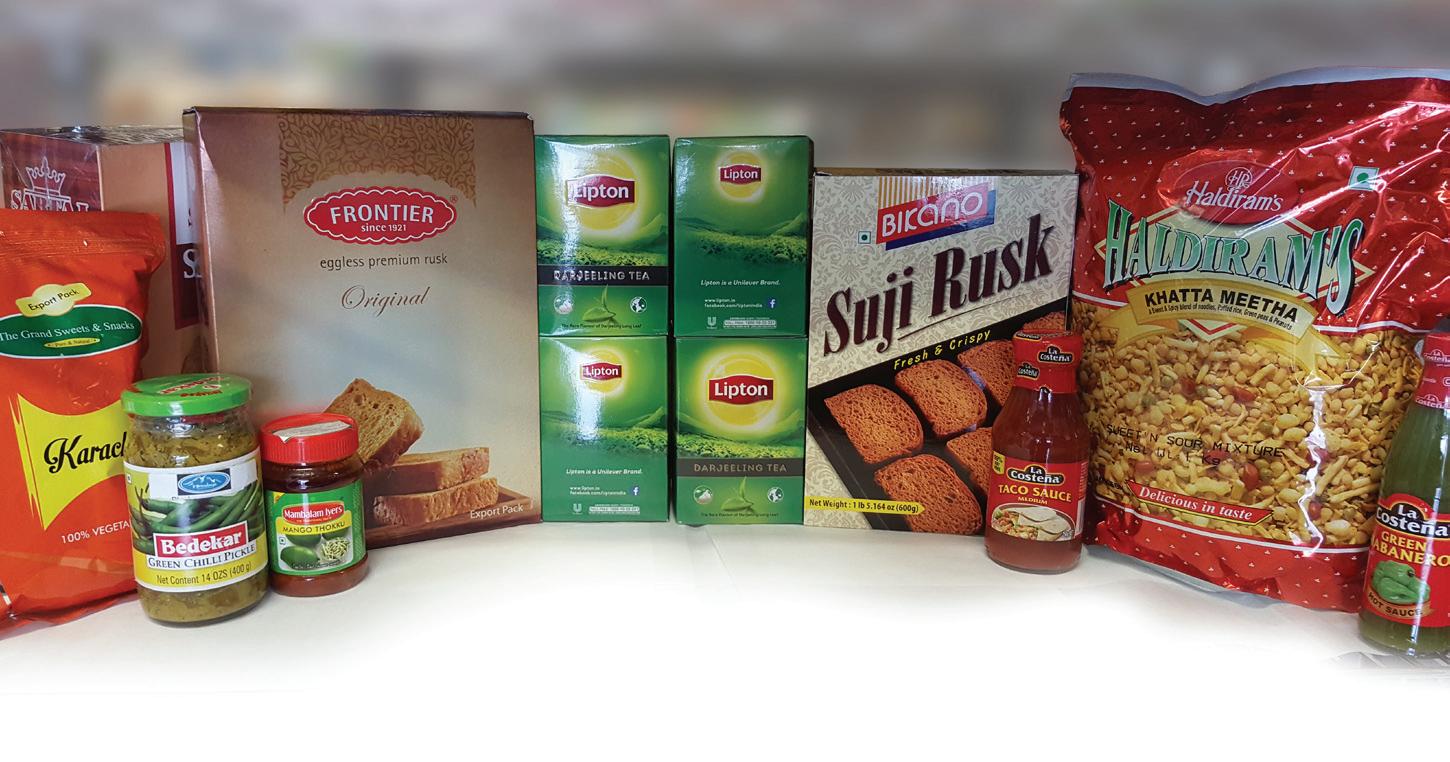
Over 25 Bank and Non-Bank Lenders on our panel
Blacktown: Level 1, 6 Main Street (opp Train station)
Ph: 1300 768 284 Fax : 1300 768 384 enquiry@taxrefundonspot.com.au
* T&C applies

red monkey baby.
BY PETRA O’NEILL
As the shiny Shinkansen bullet train sped towards the alps, Tokyo’s urban sprawl soon gave way to a landscape of rolling hills, rivers, dense forests and small neatly manicured hamlets with farmhouses built of teak and thatch.
Arriving in Matsumoto, I set off on foot alongside a river lined with cafés and boutiques where I found an excellent French-style boulangerie with cheeses, salads, crusty baguette and plump strawberries freshly picked from the mountainside.
Dominated by a large, turreted 1504-built castle that is surrounded by a moat, I climbed a series of steep stairs to the top for spectacular views of the compact city and snow-capped mountains beyond. That evening, I found Japan’s smallest homecooked Indian restaurant where the owner, Indoyama, told me that as a vegetarian, it was either open a restaurant or return to Rishikesh.
Boasting of spectacular mountain scenery, Takayama is one of Japan’s favourite destinations, with its cobbled streets lined with Edo period merchant’s houses, Buddhist temples and museums. Famous for its prized Hiba beef, Soba noodles and souvenirs, the morning market sells more trinkets now than fresh produce, particularly the traditional lucky charm of a
Infrastructure excels in Japan making travel easy. On arrival at Kanazawa and after exiting the futuristic train station, I was handed a map and directed by English speaking guides to a public hop on/hop off bus that took me to the narrow streets of samurai and geisha districts, Buddhist temples, museums, a castle dating to the 17th century and Kenroku-en, ranked as one of Japan’s most beautiful gardens. While here, I was initiated in the traditional tea ceremony at the tranquil Shigure Tei Teahouse, a haven of serenity.
Hiroshima is a pleasant city with a tragic past. The area where the memorial park lies was ground zero for the atomic bomb that devastated the city during World War II. Nearby, Miyajima is a small island with the oft-photographed vermilion Torii Gate. Sacred Mount Misen is covered with forest, pagodas and temples including Daishoin, where prayer is accompanied by loud rhythmic Taiko drumming. Shops offer local delicacies including sponge cakes filled with sweetened red bean paste called momiji manju, oysters and eel.
In Nara, the temples were overwhelming. The great temple of Todai-ji, dating to 710AD, is the largest wooden building in the world. At the centre is a Buddha statue made of cast bronze plated in gold. In the ancient neighbourhood of Naramachi, there are cafés, boutiques and traditional ryokans including the Ryokan Sakuraya, set around a garden courtyard with dividing walls of paper. Even tip-toeing echoed, and I didn’t dare move.
A bustling major port and mercantile centre, Osaka is Japan’s third largest city. At funky Amerika Mura, an enclave of hip
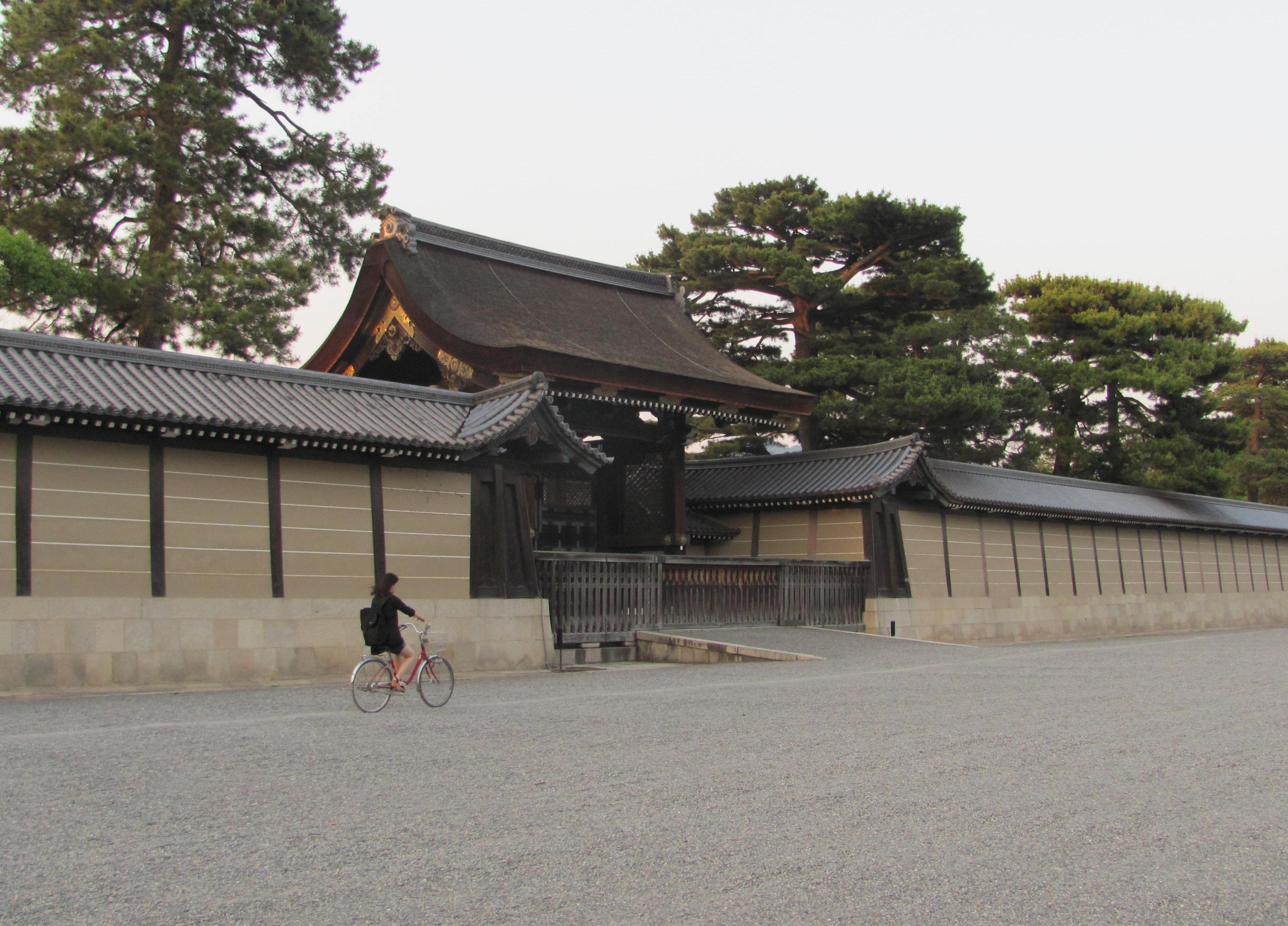
offbeat shops with dazzling neon lights, girls cycled by wearing fairytale costumes, golden locks and cosmetically enhanced faces while young men with slicked back hair stood on street corners. The area around Dotombori is lined with spruikers, pinball parlours and love hotels, while Ebisubashi, an eightblock-long covered shopping arcade, has dog patting parlours and pet shops where a small poodle tore at its frilly dress with sequins. Modern Japan delivers large doses of unreality.
My final stop was the trip highlight. Settled in the 7th century, Kyoto is surrounded by mountains, and located on a steep incline with cobbled streets that follow the contours of the landscape. Japan’s rich cultural heritage and natural beauty is everywhere, the city having a staggering 17 UNESCO World Heritage sites with castles built by Japan’s great warlords, 1600 Buddhist temples and 400 Shinto shrines. Perhaps the most exquisite Sanjusangen-do Hall is the longest wooden building in Japan at 120 metres containing 1001 life size gold statues.
In the quarter of Gion, dating to the 17th century, geishas wearing intricate kimonos and painted faces glided gracefully by. Nearby at Sannenzaka and Ninenzaka, areas with old wooden houses, tea houses and



restaurants, narrow streets were congested with tourists wearing rented kimonos and walking clumsily in wooden shoes, pausing for selfies. Of Japan’s 20 million annual tourists, most seemed to be here. Much quieter, the Path of Philosophy is a walk that meanders alongside a canal lined with cherry trees past temples and shrines.
On my final day, I visited Kamikyo-ku, an area where traditional crafts are still made by hand, the skills passed from one generation to the next including indigo-tie dyed cloth used for kimonos. I asked a young man who resembled Johnny Depp for directions. He was the owner of Aizenkobo where the indigo kimonos are made. He talked to me for a long time, explaining the dyeing process, showing me old photos of his father and grandfather and regretting that Kyoto’s traditional crafts were under threat. Months of painstaking work meant the items were prohibitively expensive, and only 5 families in Japan still made the indigo cloth. I ran out of time to visit the Imperial Palace but this chance encounter provided an insight into the Japanese character of looking to the future while tied to the past.
Speeding towards Haneda airport, Japan’s highest mountain Mt Fuji came into view. Japan would take many more visits to know and understand.
Qantas, Jetstar, Japan Airlines and ANA fly to Tokyo or Osaka. Osaka is less overwhelming with a train to the city centre for 1,000JPY.
Bullet trains are the most convenient way to explore Japan and a JR Pass is recommended. More affordable regional rail passes are also available. You must buy the JR Pass before you arrive in Japan. Once there, visit a JR office to have your pass validated and reserve your seats.
Backpacker accommodation is of a very high standard, offering free wi-fi, laundry, communal kitchen and dormitories often have privacy curtains. Recommended are Matsumoto Backpackers, Rickshaw Inn in Takayama, Hana Hostels and J-Hoppers. Affordable Japanese hotels including Toyoku-inn offer tiny spotless rooms with every conceivable convenience. Ryokans provide an insight into the Japanese lifestyle.

Within train stations you will find supermarkets, bakeries, cafes and restaurants selling noodles, sushi and other inexpensive meals. Food prices are comparable to Australia though serves are small. Well provisioned 7-Eleven stores are everywhere. Vegetarians will find sourcing food challenging since fish paste is used extensively. Recommended is Doon Shokudo Indoyama in Matsumoto for excellent veg curries.

Clothing and traditional crafts including lacquerware, pottery, porcelain and silk.
The infrastructure in Japan is staggering. Everything is spotless, safe and efficient. Train stations have tourist information centres with helpful staff and maps. Bring a wheelie bag as footpaths are in excellent shape. Most cities are compact and ideal for walking. Even outside off-peak season Japan is crowded. Arrive at major sites early or just before closing. Entry fees add up so be selective. Carry lots of cash and a cash card (7 Eleven ATMs don’t charge a fee) as credit cards are not widely used. Change the money before you go as the exchange rate for AUD in Japan is very low.
Japan’s rich cultural heritage and natural beauty is everywhere (in Kyoto), the city having a staggering 17 UNESCO World Heritage sites
control in the narration.
Throughout we see the team’s desperation to get noticed. Hence Tusshar Kapoor mimicry of a mute man’s monosyllabism is twice as insolent as compared to the earlier films in the farcical franchise.
Shreyas Talpade’s lisp is far more aggravated. And Sanjay Mishra’s nonsensical lines based on references to celebrated people (example: “Justin Bieber ke besure aulad”) is three times more nerve-grating than medically acceptable.
STARRING: Ajay Devgan, Tabu, Parineeti Chopra, plus the usual Golmaal gang
DIRECTOR: Rohit Shetty
Rohit Shetty has actually made a Golmaal film without speeding cars crashing into one another.
And that’s about the sign of maturity you will see in this franchise which seems designed for the mentally challenged.
Car crashes are the least of the worries in this, the fourth and arguably the unfunniest film in the Golmaal series. There are other catastrophes awaiting our attention in this stretched-out horror of a comedy.
The writing is so frail as to be almost non-existent. From Frame 1, the narrative saturates itself with bright inviting colours in the hope that they would dazzle us into surrender and acceptance. There is, however, a quivering absence of credibility and self-
Throughout this non-stop binge of vapid gags, Ajay Degan remains sportingly in the shadows, blending with his costars’ antics which include getting into Talpade’s lap each night as he sings a parody version of the Lata lullaby Zu zu zu zu, with a touching team spirit that would have held him in good stead were he doing a film about, say, a football team fighting to win against all odds.
Here, Devgan’s sporting spirit is sadly misused to give the film a misleading face-value.
Many other enormously talented actors like Sanjay Mishra, Sachin Khedekar, Kunal Khemu and Ashwini Kalsekar are content playing perky props in this droopy comedy-horror where it’s hard to say when the comedy ends and the horror begins.
STARRING: Zaira Wasim, Meher Vij, Aamir Khan, Raj Arjun, Harsh Jha, Kabir Sajid, Aryan Ashik, Farrokh Jaffer, Manuj Sharma and Tirth Sharma
DIRECTOR: Advait Chandan HHHHH
What one likes about Aamir Khan is that, with every act of his, he transcends as an actor. He surprises you by eerily getting into the skin of the character. With his various unconventional get-ups and demeanour, he makes you believe that he is the character he plays. And that too convincingly.
In Secret Superstar, with highlighted hair, stylized beard and a flamboyant getup, he depicts an out-of-luck music director, Shakti Kumaarr who is looking for a muse to revive his failing career. His performance is surely outstanding and entertaining.
His character takes a backseat in the narrative, but he is prominent. And the film is not about him.
Borrowing heavily from the 2015 released indie American film Rock the Kasbah, this film is smartly remodelled with cultural relevance
into a melodramatic mother-daughter relationship tale.
Narrated in a simple, old-fashioned, heartfelt manner, you expect the story to be that of an ambitious young girl pining to be a superstar at a reality contest. But instead what you get is a clichéd yet sublime story of a prodigy and the bond she shares with her mother.
Insiya is like any other teenager living in a middle-class locality of Vadodara, with a supportive mother Najma, loving brother (Kabir Sajid), an old relative and an abusive father. She dreams of becoming a famous singer, but the environment in her house is vitiated by the domestic abuse inflicted by her father. How she struggles to overcome her problems with the help of her school friend Chintan Parikh and the crass music director (Aamir Khan) to live a life on her terms, forms the crux of the tale.
Director Advait Chandan’s writing is brilliant. The script is taut and focused. The screenplay has the right combination of light and poignant moments. The characters are well-etched and the dialogues are excellent, packed with wit and sentiments which are well portrayed by the ace cast. Naturally then, this
keeps you glued to the screen.
The metaphors in the dialogues too, are fresh and apt, especially when Aamir compares the effervescence of the soda to the rise of the prodigy. Or when the mother and daughter are arguing and comparing opportunities with the train on the platform and planning of the journey.
All the actors are natural and effortless. With a gamut of emotions, Zaira Wasim as Insiya is earnest and adorable. She is brilliant when she sulks with her classmate Chintan or reasons with her mother, “What is the use of getting up in the morning and not try fulfilling the dream that you saw during the night?”
Meher Vij as Najma, the loving mother and an insecure wife, is equally sincere and arresting. She portrays the silent pain with ease. Balancing her part is Raj Arjun as the oppressive father and husband. He is potent and effective.
Parineeti Chopra playing a ghost looks lost and ill-at-ease. Maybe she took her ‘spirited’ role too seriously.
As for Tabu, as she grapples to make sense of her presence in this dull and pointless energizer, she almost looks like she was waiting for Gulzar to rescue her from a predicament worse than death.
Indeed, if there is a real hero in Golmaal Again, it is Nana Patekar who not only appears as a leading leitmotif in the ghost roast, he also makes a guest appearance in voice and person in several scenes that are in dire need of spicing up.
A bewildering blandness runs through this instalment of the Golmaal franchise. Not that there is any dearth of activity and counter-activity. The camera and the background score (which includes a refrain from Lata Mangeshkar’s immortal Kahin deep jale kahin dil, no less) are constantly on the prowl. But in vain, it’s like hunting for paper tigers in an artificial jungle.
Everything about Golmaal Again is compromised and corrupted. Every character speaks his lines with a growing hopelessness. One whole gag involves characters driving up to Devgan to ask what he’s doing standing there.

Waiting for the script to finally show up, perhaps?
Subhash K JhaFarrokh Jaffer as the old relative living with the family and Mona Ambegaonkar as a lawyer have their moments of onscreen glory.
Technically, the film is well-mounted and the music adds an additional flavour to the narrative. The lyrics and the pitch of the songs hit the right chords. Main kaun hoon and the other one with the lyrics Meri pyari ammi jo hain dedicated to mothers, go well with the flow of the narrative and the snazzy last number which runs through the end credits reemphasises Aamir’s character.
Overall, Secret Superstar has an old film charm that is simply remarkable.
 Troy Ribeiro
Troy Ribeiro
she see in him?”
A lot, apparently.
As played by the affable Ali Fazal, Abdul Karim is persuasively charming, cocky and irreverent yet attentive respectful and compassionate.
STARRING: Judi Dench and Ali Fazal
DIRECTOR: Stephen Frears
HHHHH
The film opens with a promising, serious There has been a lot of flak aimed at this enchanting film for it subversive look at colonial relationships.
For all those who refuse to take history’s lessons lightly, here is some unsolicited advice: Get a laugh.
And I do mean, laugh. For, in spite of one very moving tearful moment, sunshine and smiles are the dominant forces in Stephen Frears’ look at the very strange yet extremely noble and dignified bonding between Queen Victoria and her young clerical Indian
friend Karim, who is sent to assuage her royal ego but is soon her closest confidante and only friend in a royal household teeming with opportunists and gold diggers.
This is not to say that the film trivializes history or, as suggested by some revisionist reviewers, that it turns the relation between the conqueror and the conquered into a soppy soap opera. There is nothing soppy or sloppy about the friendship that grows between the Queen and her loyal, if somewhat selfserving, servant. Divided by cultures and continents, the two come together for a platonic friendship that defies all protocol and even basic logic. I mean, as one of the bitchy royal householders mutters under his breath, “What does
STARRING: Himanshu Kohli, Soundarya Sharma, Taaha Shah, Harry Bala, Pitobash, Pradeep Singh, Anupam Kher, Jimmy Shergill and Satish Kaushik
DIRECTOR: Sattwik Mohanty
HHH]HH
Contextually, director Sattwik Mohanty’s Ranchi Diaries showcases Asia’s largest mental hospital, which is situated in Ranchi.
But unlike the hospital which treats its patients, director Sattwik Mohanty treats (read entertains) his audience with low-IQ, physiologically-challenged characters. In this quirk-of-fate film, they are supposed to ignite the humour factor.
The plot, with a botched abduction followed by a bank robbery that lands the gang in more trouble, forms the crux of the tale.
Narrated in a non-linear manner, the plot and the screenplay are lazily crafted in a slipshod manner. The narrative begins on a dramatic note with a rural bank being robbed on the RanchiPatratu highway. While the police have surrounded the bank in the hope of arresting the robbers, speculation about the burglars abounds. Some are even as preposterous as the robbers being aliens.
Then to enlighten us on the current scenario, the narrative rewinds to events that occurred a week earlier. We are introduced to a load of characters. Instead of being organic, this information overload is indolently dumped on the audiences by a voice-over, which is unenthusiastically rendered by Vijay Raaz.
Anupam Kher plays Thakur Bhaiya, the quintessential local mafia king who has his fingers in every pie of Ranchi. His nephew Lallan (Jimmy Shergill) is the principled police officer of the region, who is at constant loggerheads with him.
Monish (Himanshu Kohli), an engineer also known as a “master mechanic,” is in love with Gudiya (Soundarya Sharma), a singer who has dreams of becoming a pop sensation like Shakira. Her talent draws the unwanted attention of Thakur Bhaiya. So they are constantly deciding to elope.
One evening, in an inebriated state, Monish abuses Thakur Bhaiya and hence is picked up by Thakur Bhaiya’s goons. Meanwhile, Monish’s friends Pinku
Just what the Queen needed in her twilight years. And let us be honest, Abdul is not above being a manipulative opportunist. But then, as the shrewd Queen retorts, who is not an opportunist in the royal household?
Director Stephen Frears, no stranger to cross-cultural romantic conflicts (who can forget the tumultuous passion between the Pakistani Omar and the British Johnny in Frears’s My Beautiful Laundrette?) here unravels with carpetlike imagery, the burgeoning fondness of the Queen for the tall handsome Oriental subject with a mixture of amusement and wonderment.
Victoria & Abdul renders itself handsomely and elegantly to the theme of ambivalent passion. The Queen may whitewash her feelings with as much decorum as she likes. But there is most certainly a dark unexpressed and inexpressible frisson between she and her unlikely brown Muslim friend whom

everyone at the Buckingham Palace refers to as ‘The Hindoo’.
Judi Dench drenches the Queen’s Victorian propriety and dignity in the colours of irreverence and iconoclasm. Queen Victoria as played by the actress, eats sumptuously (we see her at the meal table quite a number of times), drinks, burps and probably farts too. And she is not averse to snoring during ceremonial meals with aristocrats and other stuffed shirts (and stockings).
This is a fun queen, living her last years on her own terms. And Ali Fazal’s Abdul Karim provides the Queen with that impetus to be naughty and wild. Their relationship is impetuous and bridled by the Frowning Glory of the royal household. The disapproving brigade of British peers is played by a fine team of English actors.
Watching Judi and Ali sink their collaborative teeth into Victoria & Abdul provides us with a delightful, if somewhat iconoclastic, insight into what the colonial relations would have been like if they had not been encumbered by protocol. There are moments of great tenderness and understanding between the two actors, almost echoing the tender but troubled relations between Adela Quested and Dr Aziz in E.M. Foster’s A Passage To India.
Victoria & Abdul has a beautiful heart and body. It feels and looks fetching. It is a work born out of sincere feelings and therefore, worthy of the respect that it so flippantly solicits.
Subhash K Jha(Taaha Shah) and Bunty (Pradeep Singh), the two “matric-fail sons” of a retired postmaster who are bullies and consider themselves to be the Godfathers of the younger generation, unknowingly, along with their friend Babloo (Harry Bala), kidnap Thakur Bhaiya’s younger brother. Their van gets intercepted by the goons carrying Monish.

The four friends land up at Thakur Bhaiya’s bungalow who decides to teach them a lesson. Lallan interrupts Thakur’s plans by saying that if the four are involved with kidnapping, the law
will investigate and punish the four. So, he hands over the four friends to his junior, Sub Inspector Choubey (Satish Kaushik) to proceed with the investigation. Instead, the corrupt officer insists on being bribed. So, how the five of them successfully rob a bank and later lose the money, is what keeps you hooked.
While the characters are stereotypical, the performances of the entire cast are perforce perfunctory.
Overall, Ranchi Diaries tries hard to be quirky but fails miserably.
Troy RibeiroContinuing the tradition of releasing his films on the festive occasion of Eid, Bollywood superstar Salman Khan has booked the auspicious date for his 2019 release titled Bharat

The film is an official adaptation of 2014 South Korean film Ode to My Father, which depicted modern Korean history from the 1950s to the present day through the life of an ordinary man.
It showcased events such as the Hungnam Evacuation during the 1950 Korean War, the government’s decision to dispatch nurses and miners to West Germany in the 1960s and the Vietnam War.
The film was identified as potential content for the Indian audience following its screening at the Berlin Film Festival, which was attended by filmmaker Atul Agnihotri who will be backing Bharat as a producer, read a statement.
It traces the journey of a man that starts in 1947 and ends in 2002.
Agnihotri, who is also Salman’s brother-in-law, said, “It’s the journey of a country and also a person, both of whom go by the name of Bharat.”
“That film is just the starting point for us, but since it was an inspiration, we wanted in all fairness to officially own it and acquired the remake rights before going ahead with Bharat,” he added.
Bharat will be helmed by director Ali Abbas Zafar and will feature Salman as the protagonist. The project goes on the floors in April next year and will be filmed in Abu Dhabi and Spain, besides Punjab and Delhi in India.
The Indian box office witnessed a “tremendous” response during the special Diwali weekend with the release of Bollywood films Golmaal Again, Secret Superstar and Tamil film Mersal All the three movies started on a positive note, say trade gurus.
Made on a budget of Rs 15 crore including the cost of production and prints and publicity, Aamir Khan and Zaira Wasim-starrer Secret Superstar, which released on Diwali on 19 October, has minted Rs 31.31 crore in four days.
Rohit Shetty’s Golmaal Again - the fourth film in the Golmaal franchise starring Ajay Devgn, Tabu, Parineeti Chopra and Arshad Warsi among others - collected Rs 87.60 crore in three days since its release on 20 October.
“Diwali weekend has brought abundant cheer and spread sunshine,” trade analyst Taran Adarsh tweeted.
As for Mersal, Tamil actor Vijay’s Diwali release, it is also receiving a positive response in India and across the world.
The film was already much-awaited given the triple role that Vijay essays in the project, and it grabbed more headlines after the Tamil Nadu unit of the Bharatiya Janata Party (BJP) demanded the removal of specific dialogues from the movie which take a dig at the Goods and Services Tax (GST) and digital India.
Mersal chased a massive total in the international markets, despite stiff opposition posed by the two Hindi releases.
A new director, a 17-year-old lead and a cameo by Aamir in a quirky avatar.
A new film has been drawing in the audiences this month.
Advait Chandan, who has made his directorial debut with Secret Superstar - a simple tale about a teenaged girl chasing her dreams - says the response to the movie is like a “dream”.
“I went to a theatre full of people and they clapped and laughed and were moved by the film. It gave me goosebumps... I keep pinching myself to check if it’s real,” Chandan said in a statement.
The film, backed by superstar Aamir Khan, features Dangal girl Zaira Wasim as Insiya, who sets out to follow her dream of being a singing superstar under the confinement of anonymity.
Chandan acknowledges that Aamir’s presence has helped the film pull the crowds in. He said, “No production house was ready to support the film. The way Aamir Khan Productions has

supported the film with all resources and mounted the project, is great. Only AK can do that.”
Chandan is a former manager of Aamir, who plays Shakti Kumaarr in the movie.
“I wrote the part of Shakti Kumaarr and convinced him to play it, so I take full credit of his casting. In the beginning, he was hesitant, but then he also started enjoying the character.”
According to the makers, the Diwali release was made at a budget of Rs 15 crore, including cost of production and print and publicity.
It made a total of Rs 31.31 crore in the first four days of its release at the Indian box office, the makers said in a statement.
Former censor board chief Pahlaj Nihalani says people like Harvey Weinstein exist in Bollywood too, and need to be exposed.
Weinstein, a popular Hollywood producer has been accused of sexual harassment or abuse by more than three dozen women, including several top actresses including Ashley Judd, Rose McGowan, Gwyneth Paltrow, Cara Delevingne, Lupita Nyong’o and Angelina Jolie.
In a recent interview, actress Priyanka Chopra spoke up about the Weinstein element being prevalent everywhere, including Bollywood.
Nihalani concurs. “Priyanka is right. There are Harvey Weinsteins in Bollywood too. They continue to exploit hapless strugglers because they are not held liable for their dirty deeds. This is the time to expose them.”
“I am talking about aspiring actors and actresses being forced to offer sexual favours in exchange for job opportunities. Bollywood has a very clear list of offenders who misuse their position,” added Nihalani.
The Weinstein episode seems perfectly timed for Nihalani’s new film Julie 2, which he is presenting and distributing: it is about the casting couch menace in Bollywood.
Appalled that actresses have not come forward to name these offenders,
Nihalani now intends to shout out their names at a press conference.
“But for that we need victims to come forward. We are in the process of getting together voices of the victims to speak up publicly. The time to nail the Harvey Weinsteins of Bollywood is now.”

Just after Diwali this year, actressfilmmaker Pooja Bhatt announced a new project. No, it’s not a film, but a book. One that too, that tells her own story. Yes, about her battle with alcohol.
In March this year that Pooja spoke to journalist Roshmila Bhattacharya on her battle with the bottle, saying, “If I didn’t quit now, I’d have drank myself to the grave.”
It’s been ten months since she quit alcohol.
“It hasn’t been easy but it hasn’t been too difficult either,” Pooja said recently. “We announced the book on Bhai Dooj, when traditionally Indians have just ushered in a new year. As the Diwali lights continue to sparkle around us, please support me on this journey the way you always have through all my films,” added the daughter of veteran filmmaker Mahesh Bhatt.
“I would like to emphasise that it is not an autobiography. At 45, I am too
WIN MOVIE TICKETS!
What’s the chitchat here between VIRAT KOHLI and ANUSHKA SHARMA?
young to write my memoirs. As they say in filmi terms, ‘Picture abhi baaki hai, dost’. But I can help others like me deal with their problem by talking about my journey,” Pooja said.
She described it as an “arduous yet life affirming journey into my own heart”.
Roshmila Bhattacharya will co-author, and the book will be released early next year by Penguin India.

Shah Rukh Khan has condoled the death of a fan, a cancer patient Aruna PK, whose last wish was to meet with him. She was 60, and had been battling cancer for six years.
The news of her death was shared by her son Akshat Khot on Twitter.
Shah Rukh tweeted back, “May Allah give you strength to deal with the loss of your beautiful mother. I know how sad it is to deal with the loss of a parent. Know that she is always with you and henceforth do things that give her reasons to smile in heaven.”
Akshat said, “Thank you SRK for giving her happiness in her final moments.”
Aruna’s wish had first come to the actor’s notice when well-wishers of the cancer patient united to start a Twitter campaign titled #SRKmeetsAruna by reportedly sharing images of the 60-year-old on a hospital bed.
MIRA KAPOOR or KRISTINA BAZAN in SELF PORTRAIT?


Share your views with us on our Facebook page /IndianLinkAustralia
Earlier, he had taken to social media to send a video message to Aruna. “I’m made to understand through your son Akshat and daughter Priyanka that you are fighting with an illness. I want to say that I and my whole family, we are praying for your wellness,” he had said.
Real life lovebirds Virat Kohli and Anushka Sharma appeared in an ad together recently and literally broke the internet. In a little film that screams #RelationshipGoals, the good-looking couple, attending someone else’s wedding, end up taking their own vows, albeit rather unconventional ones. The chemistry in palpable as the two promise the little things they will do for each other. Sigh!

Twitter went into a meltdown. Don’t say anything. Just LOOK at them Way too much cuteness to handle. Cutest couple on the planet. Just check out #Virushka for yourself.
The father-son bond is the backbone in Rukh, starring Manoj Bajpayee. It is the story of Dhruv (Adarsh Gourav), an 18-year-old boy, who is away from home in a boarding school and ignorant about the ongoing crisis in his family. His life takes an unexpected turn as he gets the news of his father’s death in a car accident. As he copes with the tragedy, many hidden truths begin to unravel. The film is scheduled to release on 27 October.
It was India’s long-awaited moment of cricket glory. The 1983 World Cup will now come to our cinema screens, in a film entitled 83. Starring Ranveer Singh as captain Kapil Dev and directed by Kabir Khan, the film has been written by National Award-winning director Sanjay Puran Singh Chauhan.
Actor Pankaj Tripathi has won the Best Actor title at the Cape Town International Film Market and Festival for Mango Dreams
Directed by John Upchurch, the film is about a Hindu doctor with dementia and a Muslim auto-rickshaw driver who form an unlikely friendship as they cross India in search of the doctor’s childhood home. Pankaj essays the auto-rickshaw driver, while the role of the doctor is essayed by theatre veteran Ram Gopal Bajaj.
Send your response to: media@indianlink.com.au TO WIN A MOVIE TICKET!!
LAST ISSUE CAPTION CONTEST WINNING ENTRY
What is HRITHIK ROSHAN thinking here?

Gaurav W: Kaash ki Jadoo sach mein hota aur mujhe saari powers deta, to mein meri life theek kar sakhta!
Gaurav wins a Hoyts movie ticket
Some other good ones:
Raka Mitra: Bindia chamkegi, ‘Kangana’ khankegi, meri neend ude, te ud jaye!
Nisha Sharma: Thank god! These fans don’t know know my reality!

Nivedita Kunder: Jaadooo yaar, kidhar gayab hai tu! Please come take me with you.
Raghu Rules: Wear watches on both hands. Time is valuable.


Last week, my good friend sent me a text asking if my wife and I were interested in going to a restaurant for a craft beers night. I asked my wife about it, and she indicated that it was a school night and didn’t want to go out. So I texted my friend back and said I would go along. Well, two days ago, my friend calls up and says that the tickets to this event was $150 per person and he had bought a ticket for me and I owed him $150. Auntyji, I was shocked. $150! And I am trying to avoid beer because I have put on weight. Now I can’t back out of this event, but do you think it was poor form of my friend not to let me know that cost of the ticket? My wife says it’s my fault because I chose to go out without herbut I did not feel like a quiet night in. Do you have sympathy for me?
Hmm. On reading this, I can see the entire events playing out in slow motion, as though it was a bad fillum from the ’80s - compete with hijra
makeup, overacting and bad direction. So your sensible wife said no to a midweek dinner invite. But what did you do? You were so eager to rush out for dinner that you failed to ask basic questions. You knew it was a craft beers night, and beers had made you a gola dhamola, a motu, a gulab jamun - yet you still had to rush in where angels like your wife feared to tread. You did not ask any questions. You did not think that perhaps a quiet night in with wifey would be a better option. So you got what you deserved. You are $150 poorer, at least 4 kg heavier and 5 points dumber. This is all your fault. And someone like you deserves bekaar friends who withhold vital information and who have no shame taking $150 from you. I hope you have learnt your lesson. Try to be more like your wife. Don’t be that husband who will rush out of the house at every opportunity. And one more thing. You will probably get food poisoning from all that craft beer and mixing of food. But, it will be well deserved - you earned it.

Some time back, I vaguely recall reading a question posed by a man whose wife used to sing along to songs while they were driving in the car. I don’t recall what your answer was, so I am hoping you can enlighten me, as lately, my wife sings loudly to all songs she hears in the car. If she was an Asha Bhosle, then I would not complain, but she sings the same way most of us do - out of tune, mangling words and with the same pitch as a billi being chased with a gushing garden hose. What suggestions do you have for me? I am scared to say anything, in case she yells at me.

Clearly, for a chuha like you, you need to join the billi brigade. If you are too much of a chhipkalee and can’t say boo to your wife without pasina all over your mukhda, then you have no choice but to align yourself with wifey. So the

next time you are in the car and she starts singing, then you too, should immediately join in and sing at the top of your phati hua awaaz. And for good measure, exaggerate your singing abilities. Pretend you are Mohammed Rafi after sucking in a dozen helium balloons. Mangle the words until the verses mean nothing. If your wife complains, you must act hurt and say that because she was singing, you felt compelled to join in. If she insists that only she can sing, then you must stand your ground and say that for every two songs she sings, you should be allowed to sing one. Ultimately, your wife will get the message. She will stop singing in the car. If she doesn’t, then secretly record her on your iPhone and play it back to her. Tell her she sounds so melodious and that all your friends must hear this. Tell her she will need to go on Australia Indian Idol. Hopefully, if she has some sense and a little bit of sharam, she will get the message.


By replacing and upgrading parts of the existing phone and internet network, nbn is bringing more Australians access to fast and reliable broadband services.*
Most homes and businesses need to switch
As most existing landline phone and internet services will be disconnected, it’s important you switch affected services before your disconnection date.^ nbn will notify you by mail once you can switch to a new plan over the nbn™ access network. You’ll then have up to 18 months before existing services are disconnected.^




















This means nbn does not sell to the public. nbn supplies phone and internet providers with wholesale services they combine with their own network services to deliver your new plan. So you’ll need to contact your preferred provider once you’re ready to switch.
You have a choice of speeds nbn offers three superfast wholesale speed tiers to providers 25Mbps, 50Mbps and 100Mbps.* There’s also 12Mbps, which is not considered superfast broadband.* Talk to your phone and internet provider about speed tiers available in your area, as well as the actual speeds you can expect to experience on your new plan (particularly during peak times like the evening).
Factors affecting your experience
The nbn™ access network and your provider’s network are likely to slow down when more people are online at once. Maximum speeds will also vary based on your modem, Wi Fi
and other issues.*For more information on how your particular experience will be affected, speak to your provider.
Important information on device compatibility
Safety critical devices like medical alarms, fire alarms, monitored security alarms and lift emergency phones, may not be compatible with your new plan at all times.† To help minimise a loss in your services, check with your device provider that these will work on your new plan or whether you’ll need to find an alternative solution. It’s also important you register safety critical devices with nbn by calling 1800 227 300 or visiting nbn.com.au/compatibility.


*Your experience, including the speeds actually achieved over the nbn™ broadband access network, depends on the technology over which services are delivered to your premises and some factors outside our control (like your equipment quality, software, signal quality, broadband plan and how your service provider designs its network). nbn is a provider of wholesale speeds to internet providers. nbn™ wholesale speed tiers available to your phone and internet provider vary depending on the access technology in your area. ^ Services offered to phone and internet providers over the nbn™ broadband access network will be replacing phone and internet services provided over most of the existing landline networks, including copper and the majority of HFC networks within the fixed line footprint. Services provided over existing fibre networks (including in‑building, health and education networks) and some special and business services may not be affected. To find out if your services will be affected, please contact your current phone or internet provider. For more information, visit nbn.com.au/ switchoff or call 1800 687 626.† The rollout of the nbn™ broadband access network will involve new technologies, and some existing devices (including many medical alarms, autodiallers and emergency call buttons) may not be compatible with these at all times. You should contact your device provider to find out if your alarm or other device will work when connected to the nbn™ broadband access network and what alternative solutions are available. For more information, visit nbn.com.au/compatibility.



• Results: Our students are 4x more likely to score Band 6

• Teachers: HSC top performers and qualified professionals
• Resources: Written by leading textbook authors and HSC markers
Years 7-12. Enrol now for Term 4, 2017.